FEATURED ARTICLE
Destination Office
What returning to the workplace looks like IRL

OUR LOCATIONS ABOUT TANGRAM
Santa Fe Springs, CA 9200 Sorensen Avenue
Santa Fe Springs, CA 90670
Newport Beach, CA
1375 Dove Street, Suite 300 Newport Beach, CA 92660
Downtown Los Angeles
527 West 7th Street, Suite 1204
Los Angeles, CA 90014
Bakersfield, CA
7415 Meany Avenue
Bakersfield, CA 93308
Fresno, CA
677 West Palmdon Drive, Suite 101 Fresno, CA 93704
Dallas, TX 300 South Pearl Expressway, Suite 200 Dallas, TX 75201
Headquarters: 9200 Sorensen Avenue Santa Fe Springs, CA 90670
562.365.5000 tangraminteriors.com
FOLLOW
TangramInteriors YourOfficeInspired
© Puzzle Vol. 13 - The New Office
Cover Photo: Orangebox Campers & Dens
CONTACT US
Tangram is an innovator in the design and execution of highly creative interior environments and workspaces. The firm collaborates with clients as a creative partner to create and manage environments that enhance the client’s brand and culture through the expert integration of technology, furniture, floor coverings and service solutions. It creates extraordinary value by providing a remarkable experience throughout each customer’s life cycle of needs. A flagship dealer for Steelcase, Tangram also represents hundreds of other well-known leading brands. US
A LETTER FROM MARKETING

In today’s evolving work landscape, working from home poses challenges. As someone who enjoys tinkering and finding inspiration for projects, I understand the difficulties of staying productive amidst distractions at home. Yet, I appreciate the comforts of a private workspace that enhance focus. Choosing between an open workspace and a home office is tough.
The future of workspaces may not rely on traditional private offices. I envision communal private offices as a versatile and impactful solution. They would offer privacy for a full day of focused work if desired, going beyond serving as temporary rooms for calls.
In recent years, office design has undergone a remarkable transformation, with a shift towards creating environments that emulate the comfort of a residential setting. These spaces encourage diverse work styles, flexibility, and well-being, and include phone booths, work cafes, lounges, bench workstations, and recreational areas. However, an effective workspace extends beyond physical elements to foster a sense of community. Just like a thriving city, a comprehensive work environment should provide various elements like parks, coffee shops, office spaces, and home comforts, allowing employees to feel comfortable, productive, and engaged.
By nurturing a strong sense of community within the office, we can foster meaningful connections, spur idea exchange, and cultivate a collaborative culture. These communal spaces would become thriving centers of creativity and innovation, where employees from diverse departments and backgrounds can come together to share their expertise and unique perspectives.
As we navigate the future of work, it is crucial to strike a delicate balance between privacy and community in our workspaces. By embracing the power of communal private offices and designing environments that promote both productivity and social interaction, we can create workspaces that inspire, empower, and enable employees to thrive.
Paul Randall Smith Chief Marketing Officer
TABLE OF CONTENTS


The Next Generation Private Office Collaborative Spaces Earning the Commute Flexibility Destination Office Outdoor Spaces Technology 06 12 44 50 94 102 124
CONTENTS

6 Puzzle: The New Office
The Next Generation Private Office
Private offices are making a comeback. But these are not your parents’ offices. Personal spaces can play a key role in a flexible, collaborative workplace.
Teresa Rodriguez Managing Director LPA Design Studios
Amber Jones Vice President, Sales Tangram Interiors
7 A Tangram Interiors Magazine

8 Puzzle: The New Office
The private office is having a moment.


9 A Tangram Interiors Magazine
As office markets adjust to the new normal, more and more clients are asking about private offices, which had essentially disappeared from many workplaces over the past few years.

Initially, this was a response to Covid. People wanted to have their own space where they can go in, shut the door, and feel a level of comfort and security, as well as privacy. In the post-pandemic paradigm, private offices are now seen by some companies as an incentive for leadership to return to the workplace, an important step in bringing employees back into the office.
While the traditional office model has held tried and true for professional services clients such as law firms and banking clients, other sectors are re-evaluating their needs and finding ways to incentivize the return to the office. Private offices are sometimes the answer. Recent research by furniture maker Steelcase found that the presence of leadership is one of the primary amenities drawing people back into the office –employees want that mentorship and guidance. And they want personalized space, where they can display family photos and personal effects like they do at home.
But our discussions around private offices these days are often more about the company’s broader mission. Executive leadership space may be important, but it should be evaluated in the context of the company’s brand and culture – private space can play a larger role in an inclusive, flexible workplace that serves many roles.
Private offices don’t have to be spaces designated for one person, forever. They can be created with flexible materials and furniture to serve multiple uses and integrate into a culture of mentorship and collaboration. While they address current needs, they can be designed to change as companies evolve and grow.
Every workplace is different, but a few core strategies can make private office space an important part of the next generation workplace.
Building a Central Core
The return of the private office doesn’t necessarily imply the return of corner offices. Companies understand the need for leadership to be accessible and approachable for mentorship opportunities and the sharing of knowledge, experience and expertise with the younger employees.
Moving private offices to a central core not only allows for easy access and visibility to leadership, but also maximizes access to natural light and views. These private spaces can also serve as huddle rooms and quiet spaces for all employees and their central location will provide ease of access when a last-minute brainstorm session or call arises.
Additionally, moving private spaces into the center core provides more mobility throughout the growth of the organization. In programming the expansion of a recent client, the relocation of perimeter offices to the central core was key and we designed the offices in a common module, allowing the client to easily change the use, if needed. Those assigned a dedicated office were expected to be in the office 85% of the time in a hybrid work model, which allowed for most team members to work three days a week in the office, and two days a week remotely.
Designing for Flexibility
In today’s workplace, every element should serve multiple purposes. If the private office isn’t reserved for a single employee, it can be used for various purposes throughout the day, including one-on-one meetings or heads down work.
Now, you may be asking, what if we don’t need the private office space in five years? We then ask, could you use more small collaborative space? An alternate space for a mother’s room or meditation space? We can always repurpose it.
Through furnishings, setup, and layout, these private spaces can become even more flexible and adaptable to different needs – now and far into the future. Offices don’t have to be
10 Puzzle: The New Office
built with the permanence of metal stud framing and drywall – instead, demountable designs can be reconfigured and enclosed should the need arise.
Furnishing choices can also support different strategies. Locally, “work walls” are becoming more popular. Instead of an L-shaped desk, a single-wall with a height adjustable desk and shelves create flexibility and a smaller footprint.
Creating Neighborhoods
The workplace is most successful when it becomes a collection of environments designed to meet the greater needs of the staff and company. Every employee needs the option to change environments as dictated by their schedule and their daily needs/desires – equity and inclusion should be at the forefront of any workspace planning discussion.
Private offices need to be included in the neighborhood conversation, serving as solace for someone who needs quiet or a space of connection for one-on-one mentorship. Instead of discussing how to bring leadership out of their office, perhaps we can explore how to create a private office that invites connection and conversation – or on the flip side, how surrounding neighborhoods invite engagement beyond the office walls. Whether inside or outside of a private office, it is imperative that every employee feels comfortable to utilize and interact with any colleague or environment, establishing workplace value across generations.
Technology Upgrades
A large missing factor is technology. Designs need to incorporate technology from the start, not as an afterthought. Additionally, it needs to be consistent and easily accessible throughout the entire workplace, promoting mobility and space utilization beyond the private office.

Instead of technology only being found in private offices, it should be ubiquitous to promote equity and the idea that work can happen anywhere. And it needs to be easy to use. One of the biggest challenges we hear from our clients is that teams are in the office, but still collaborating via Zoom because they have trouble utilizing the technology in their collaborative spaces.
If we’ve learned anything from recent events, it is that five years from now, everything we know about the workplace could be different. Private offices could serve an important role now, but the way we utilize them is going to continue to evolve. We need to design our workspaces with the ability to grow and adapt down the road and create spaces that create different types of value for companies.
11 A Tangram Interiors Magazine
COLLABORATIVE SPACES

Belkin Office, El Segundo, CA 12 Puzzle: The New Office
Collaborative Spaces
Previously, many workplaces were set up to emphasize individual work at workstations. Going forward, they need to offer greater support for connecting and collaborating — essential aspects of a fulfilling work experience for which home offices are ill-suited. This will need to include support for hybrid collaboration in terms of the spaces and technology that support working together when people are both in the office and in remote locations. In recent Steelcase research findings, people significantly prioritized spaces to support hybrid collaboration as critical to a good office experience.
COLLABORATIVE SPACES
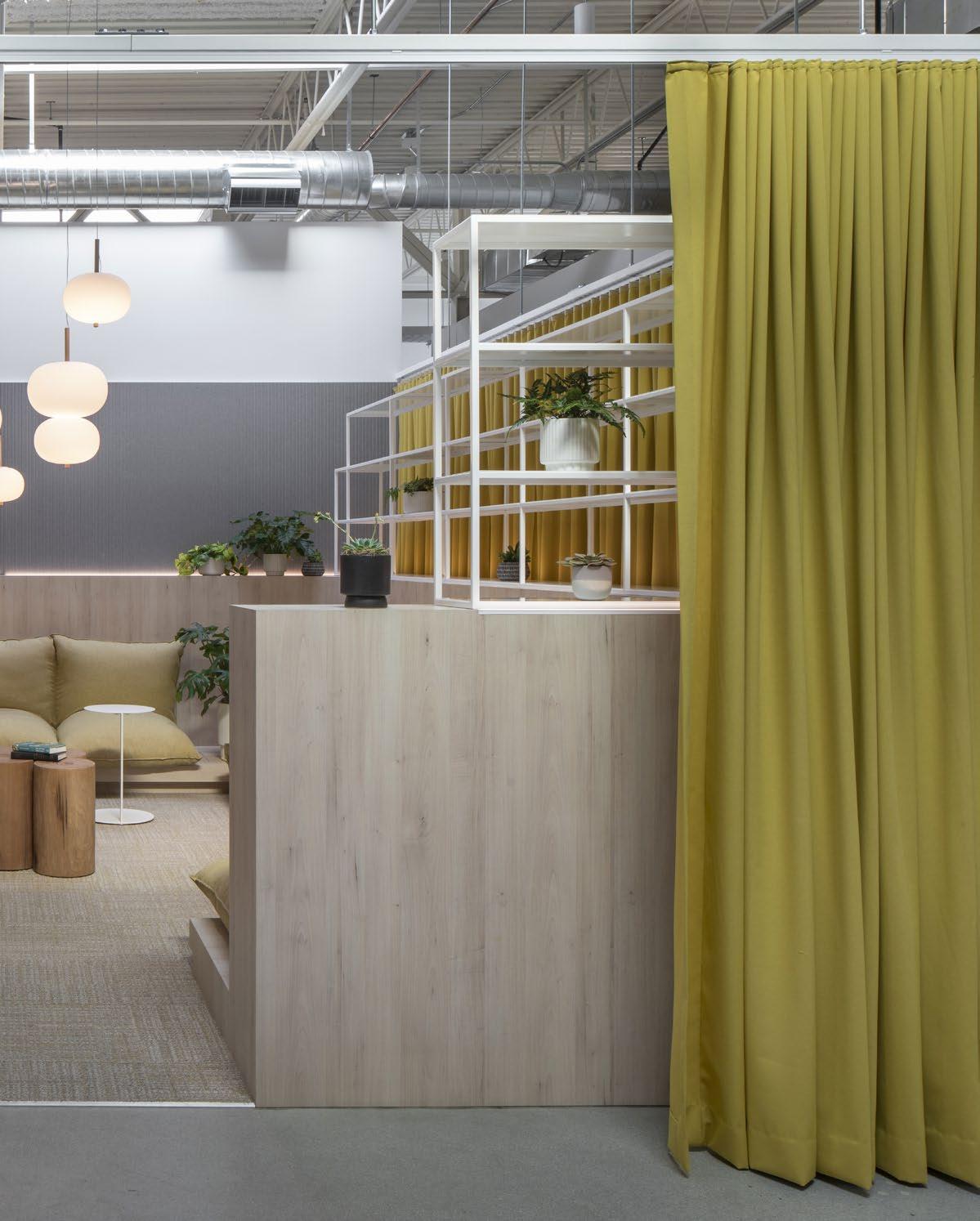
13 A Tangram Interiors Magazine
The SOFT ROCK lounge seaters blend subtly into all kinds of lounge or workspaces and help to create a welcoming, safe and calm atmosphere for relaxation, informal meetings, collaborative or individual tasks. This modular lounge seating system adds more freedom and mobility to modern offices and promotes a stress-free approach to daily tasks.


14 Puzzle: The New Office
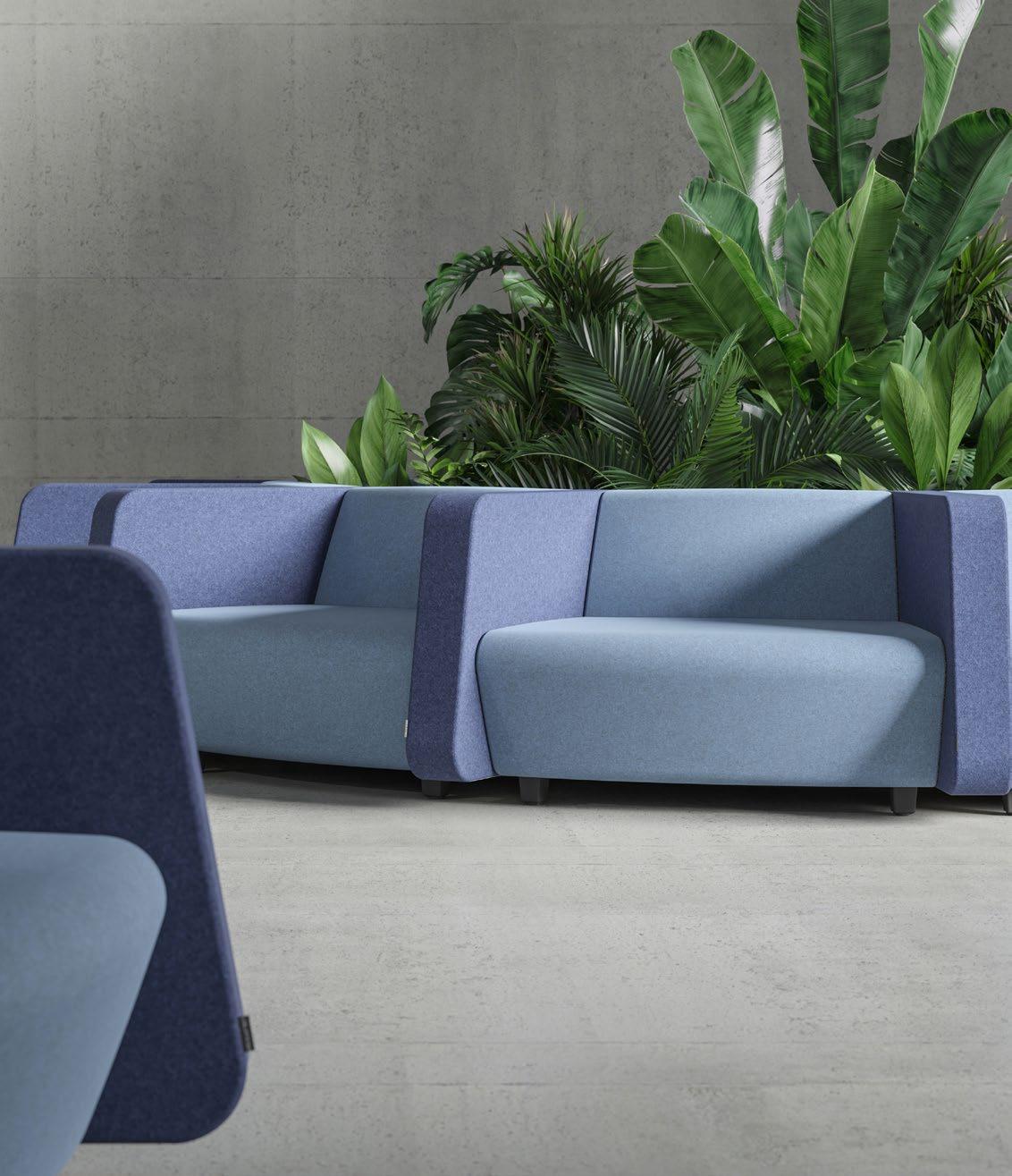
15 A Tangram Interiors Magazine
SOFTROCK by Narbutas
Technology is an integral part of modern living. In order to meet your need for constant connectivity or, in other words, your need to always remain “connected”, the armrests of the SOFT ROCK furniture have in-built power sockets or fast charging USB (Type A+C) ports.

SOFT ROCK lounge seating furniture offers its users a convenient way of charging their mobile phones, laptops or other smart devices.

16 Puzzle: The New Office

17 A Tangram Interiors Magazine
In today’s active office, travelling furniture offers even more flexibility. WORKLAB can be used as a mobile conference wall, writing board, temporary workstation,
shelf or a room divider, exactly where you need to place it. Different materials and colors are used to create the look and feel that you want.
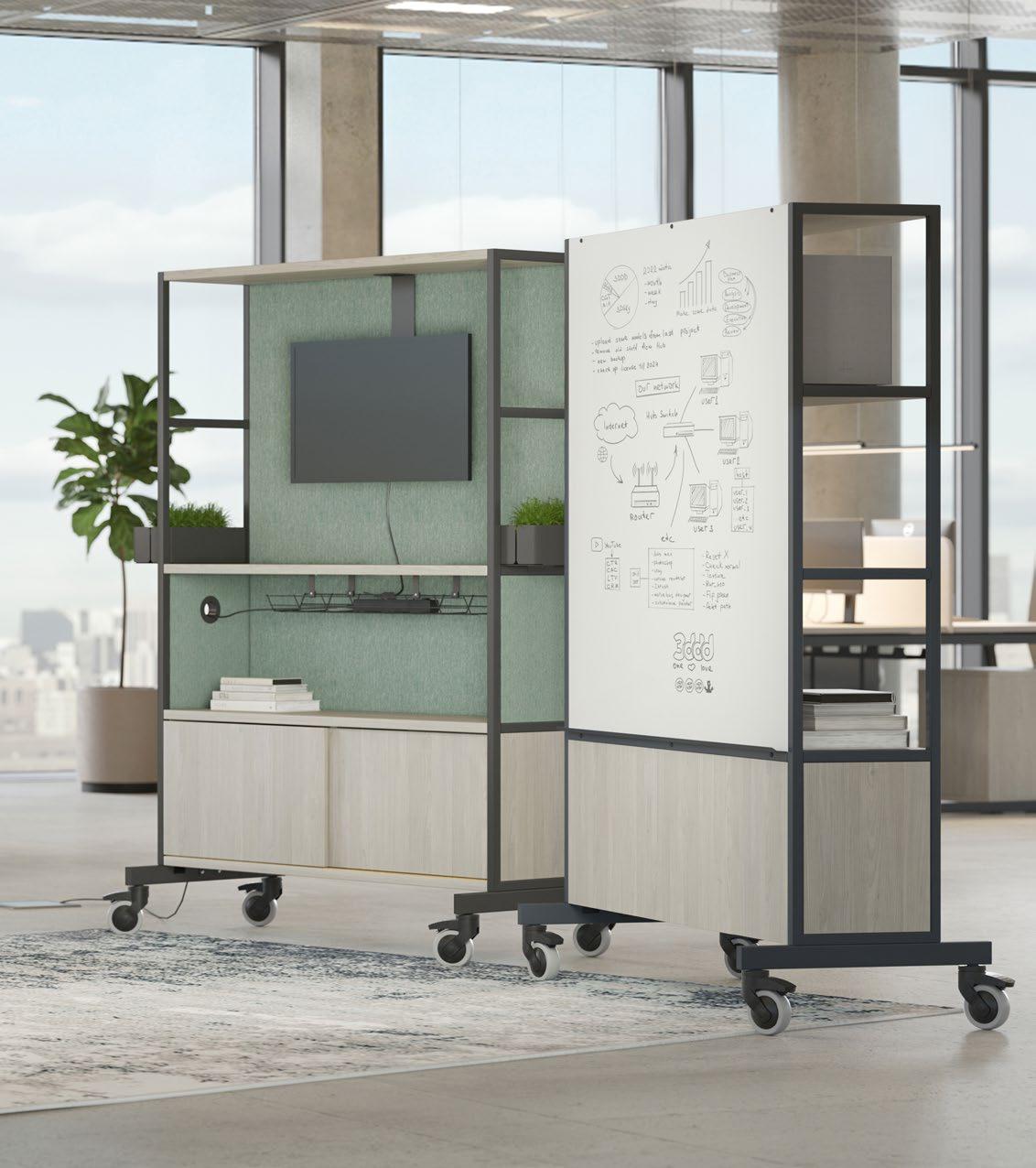
18 Puzzle: The New Office
“The idea arose from the need to have a dynamic workspace and to break free from orderly office schemes. It has been designed to fit in all those spaces that need to be modified on demand. WORKLAB moves in order to make spaces for different types of work.“

Baldanzi & Novelli designers
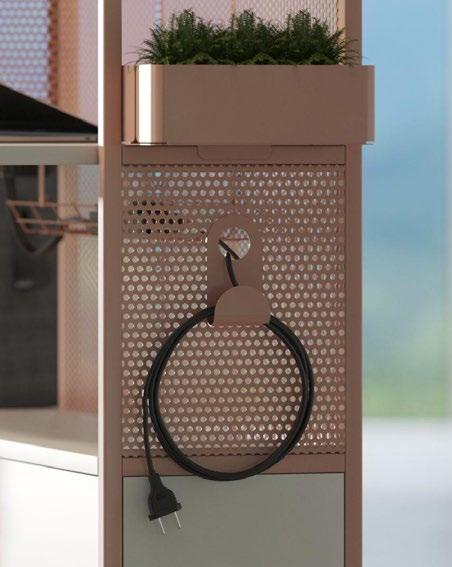
19 A Tangram Interiors Magazine
NOVA Wood adds a delicate sense of luxury to your office and brings you closer to nature and a home atmosphere. NOVA Wood desking system is ideal for open plan offices where you can arrange different areas for individual or collaborative work, meetings and leisure activities.


20 Puzzle: The New Office
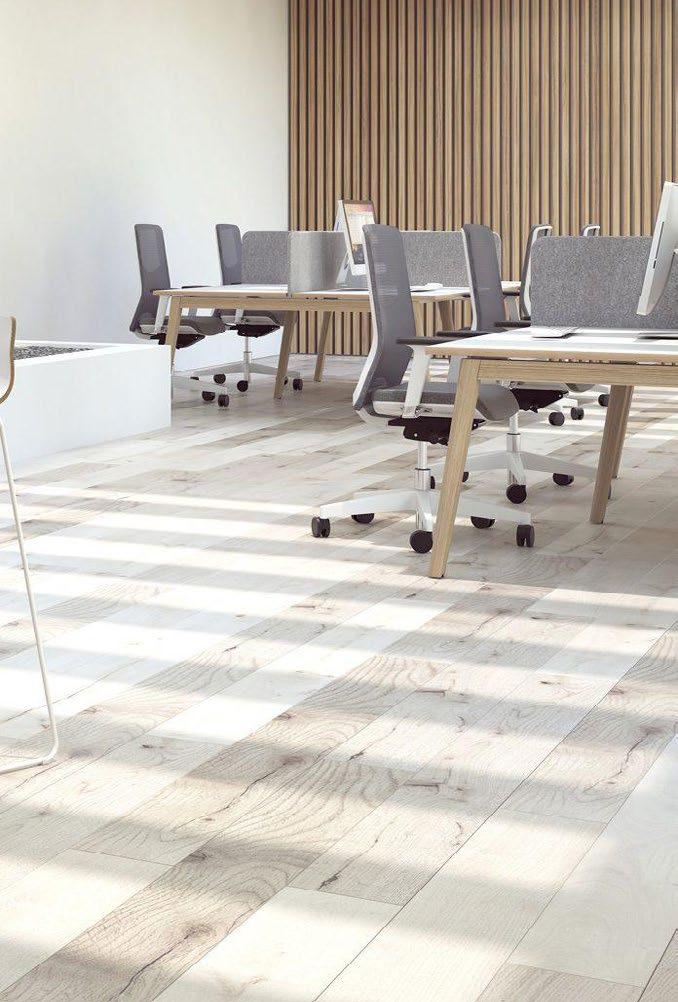


21 A Tangram Interiors Magazine
Still creates privacy and separation in openplan environments, offering the functionality of a traditional panel system with an extra touch of tailored elegance. The collection supports partially to fully enclosed spaces with optional integrated power for solo and group activities. The result is a product with multiple uses, including reduction of visual distractions and noise as well as the enforcement of greater social distancing and direction of traffic circulation.



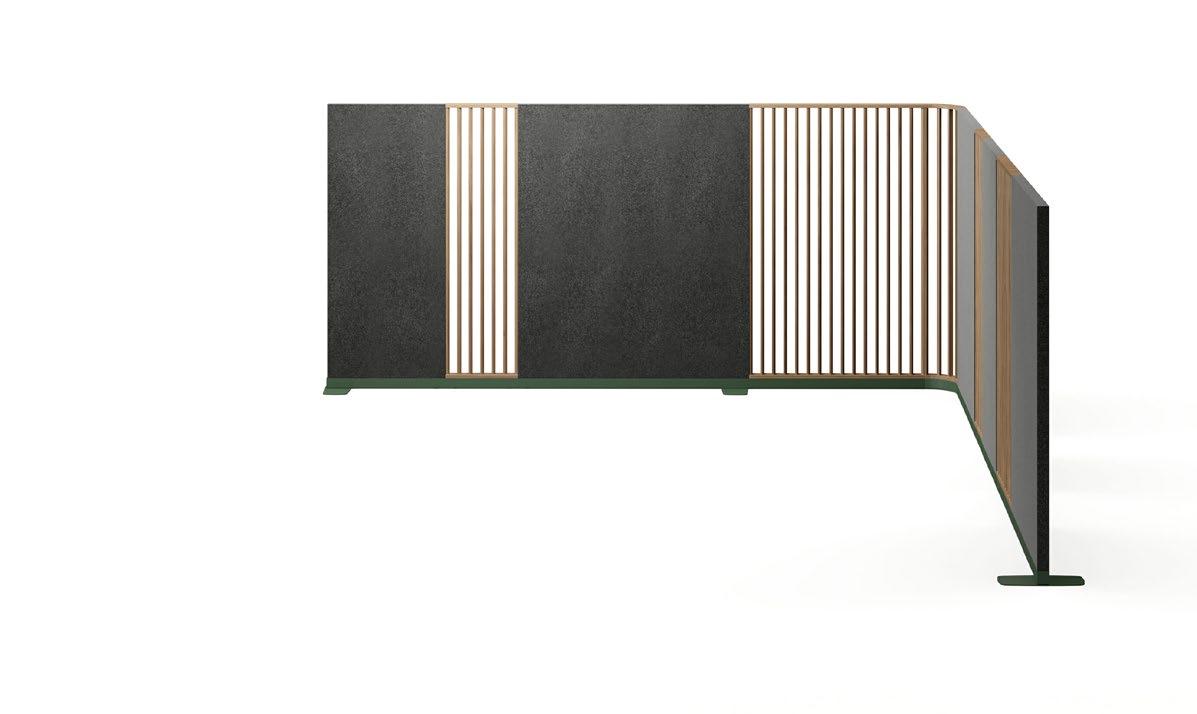

22 Puzzle: The New Office

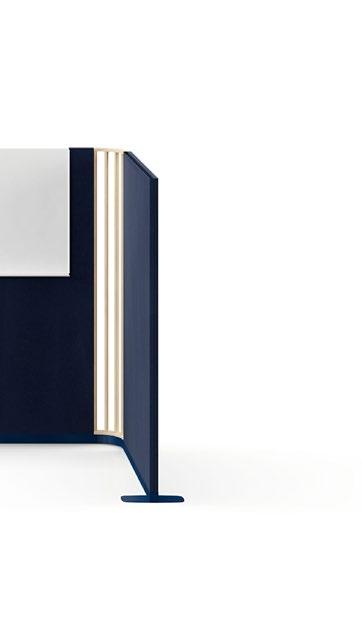



23 A Tangram Interiors Magazine


STILL SCREENS 24 Puzzle: The New Office

25 A Tangram Interiors Magazine


STILL SCREENS 26 Puzzle: The New Office


27 A Tangram Interiors Magazine

28 Puzzle: The New Office
Taking influences from classical architecture, Arcadia allows the creation of forms that are timeless and instantly familiar. Using simple but distinct typologies including arches, cloisters, colonnades, rotundas, porticos and pantheons, a whole system of micro-architecture is now available to the workspace designer. A landscaping tool-kit that is distinctive, yet not highly directive.
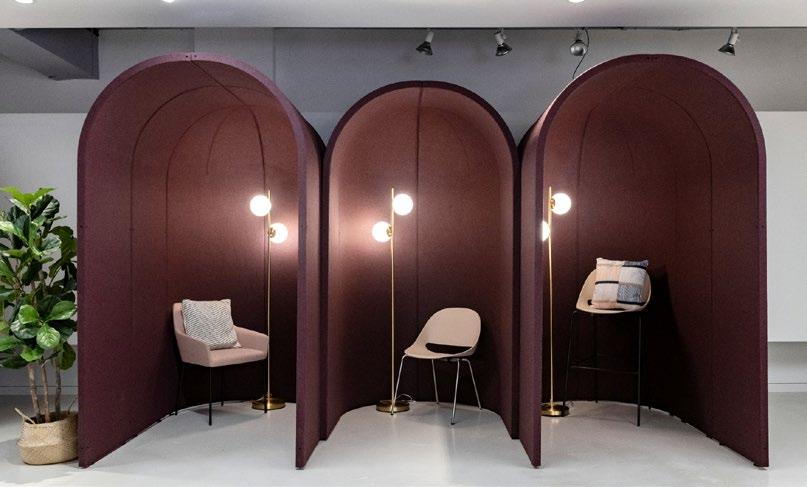



29 A Tangram Interiors Magazine

30 Puzzle: The New Office


ARCADIA 31 A Tangram Interiors Magazine
A unique, demountable system that can be moved, re-positioned or re-used to suit changing needs, Campers & Dens builds on key Orangebox innovations such as their internationally patented opening roof system. The platform offers both unrivaled adaptability and the benefits of a manufactured system, putting it perfectly in sync with today’s fast-evolving and constantly changing workplace – in contrast to one-off static designs, which

are no longer fit for the future. Campers & Dens is the updated answer to Why Build Walls?, delivering layers of privacy through pods, cabins and awnings; and flexibility and choice thanks to its wide range of configurations. A beautiful and refined piece of interior architecture, Campers & Dens also offers a customizable canvas for architects, designers and clients to have fun with, helped by finishes ranging from fabric and laminates to plywood and painted metal.

32 Puzzle: The New Office
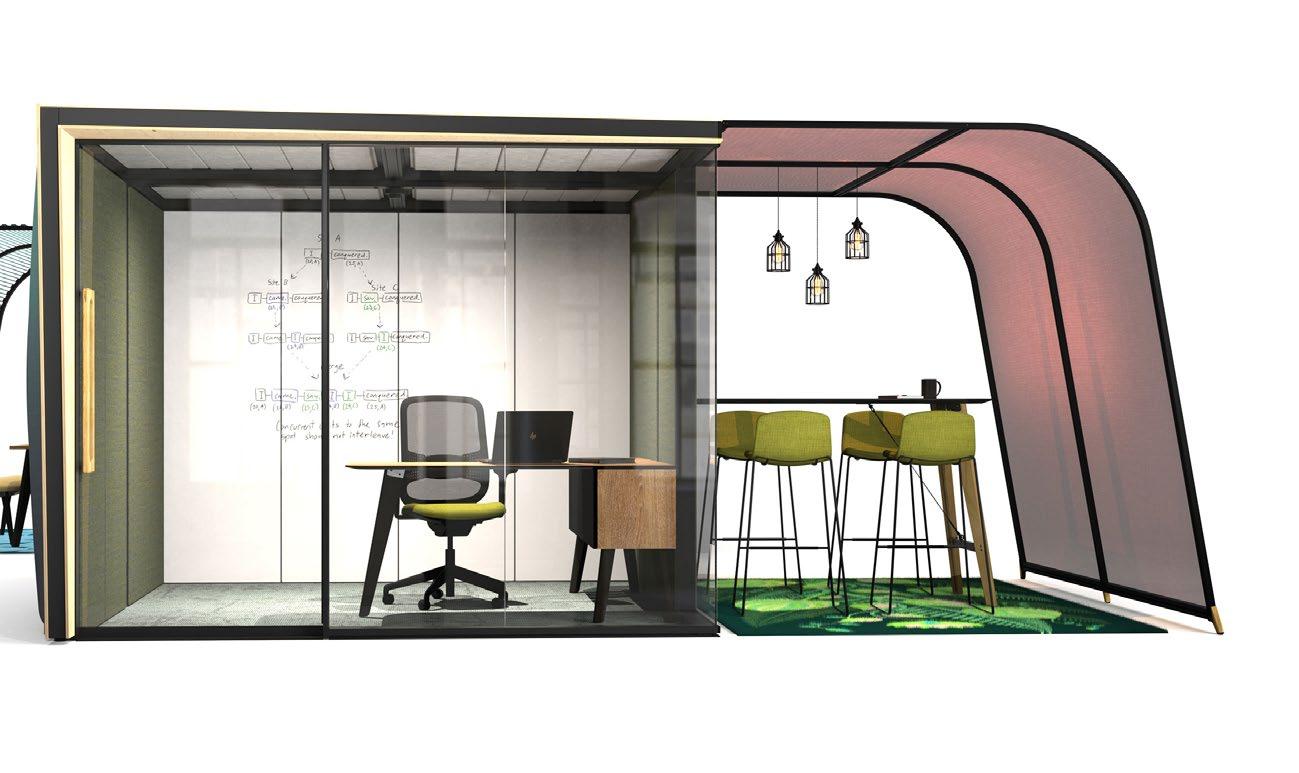

33 A Tangram Interiors Magazine

34 Puzzle: The New Office
CAMPERS & DENS


35 A Tangram Interiors Magazine
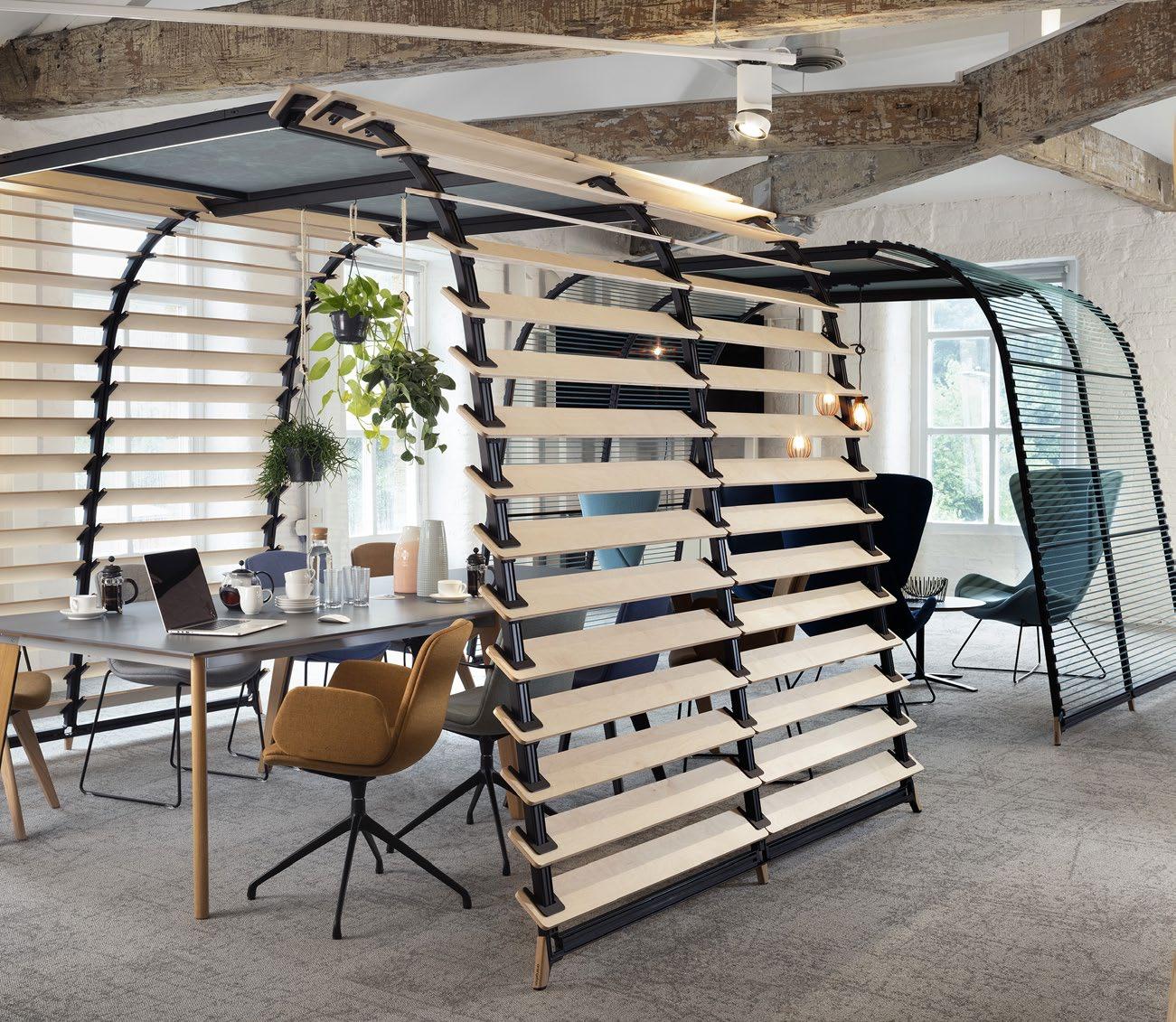
36 Puzzle: The New Office
CAMPERS & DENS
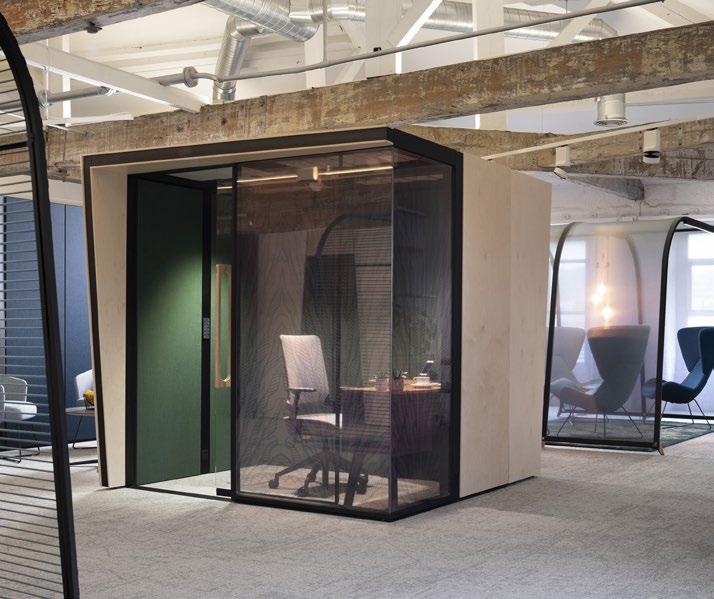

37 A Tangram Interiors Magazine
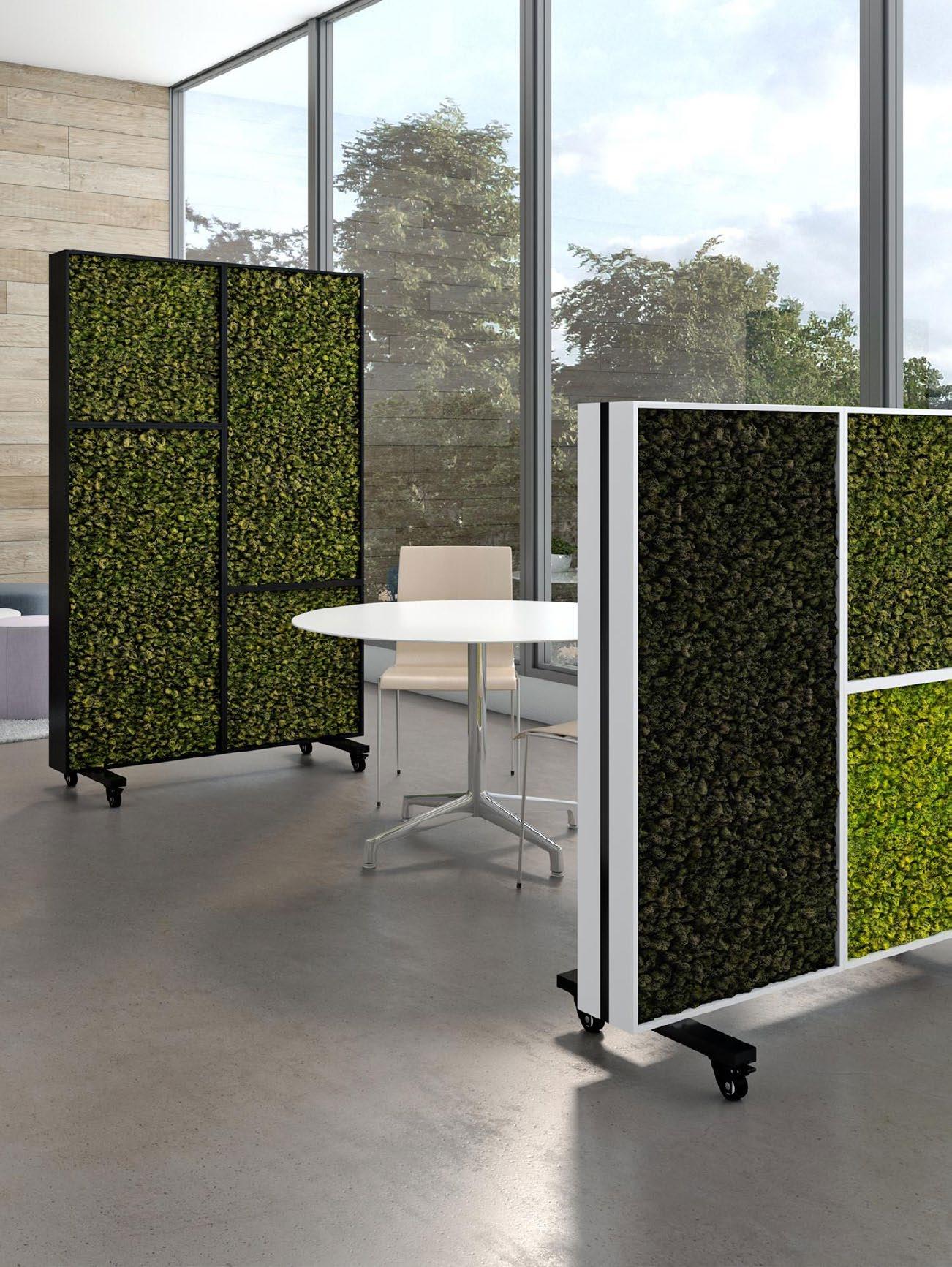
38 Puzzle: The New Office
Bio-Canvas uses lightweight frames that mount easily on walls and can be filled with biophilic, natural materials, which allows for

an infinite number of design possibilities, all of which include beautiful, sustainable, natural materials.

39 A Tangram Interiors Magazine



40 Puzzle: The New Office




41 A Tangram Interiors Magazine
BIO-CANVAS

42 Puzzle: The New Office
Available on the MIX Contemporary and MIX Industrial Mobiles, these all-natural biophilic panels retain their vibrant, fresh-cut look for 10+ years, giving designers a creative, long-lasting option for nature themed interiors. These all-natural preserved plants do not require water, sunlight, soil, misting or irrigation.

43 A Tangram Interiors Magazine
‘Earning the Commute’: What New Research Says About Getting People Back in the Office
Steelcase surveyed 58,000 people in 11 different countries to see what it will take to lure them back into offices and found some surprising—and some not so surprising—answers. “The workplace should be the best place to get work done.”
Dan Bigman
 Dan Bigman is Editor and Chief Content Officer of Chief Executive Group, publishers of Chief Executive, Corporate Board Member, ChiefExecutive.net, Boardmember.com, StrategicCHRO, StrategicCFO360 and StrategicCIO360. Previously he was Managing Editor at Forbes and the founding business editor of NYTimes.com.
Dan Bigman is Editor and Chief Content Officer of Chief Executive Group, publishers of Chief Executive, Corporate Board Member, ChiefExecutive.net, Boardmember.com, StrategicCHRO, StrategicCFO360 and StrategicCIO360. Previously he was Managing Editor at Forbes and the founding business editor of NYTimes.com.
44 Puzzle: The New Office



45 A Tangram Interiors Magazine



46 Puzzle: The New Office
Perhaps it’s time to try another way, one that’s more about selling and less about commanding? Allan Smith, chief revenue officer and Ron Martere, business group VP at office furniture maker Steelcase, shared insights about “earning the commute” of your workers when they’d rather stay home.
They’ve been surveying about 58,000 people in 11 different countries to get a sense of where the world’s office denizens are when it comes to work and the workplace—what they want, what they don’t, and what it might take to lure them back in.
“When they first went home, people felt a certain way, they were really worried primarily about safety,” says Smith. “Then as the pandemic went on, they were thinking, hey, you know, it’s kind of a far commute…how do I make the office really worth the commute? And they shifted concerns from really less about safety and more about privacy issues. And then also secondarily about collaborating with their teams.”
How does that actually play out in an office? Smith and Martere have some ideas based on the research. But bottom line, if you want your people to come in, it will need to compete with—and beat—the alternatives.
“We believe that the workplace should be the best place to get work done,” says Martere. “You can get work done anywhere, but on balance, I want to come into my work, my office, because I’ll have access to colleagues, I’ll have the best technology, I can connect to the culture, I can learn, I can be a mentor, those type of things. And so we want to make sure it’s a really an attractive place where people want to be, not necessarily have to be.”
Some takeaways from the conversation about what your people are really looking for when they’re back in the office:
They want to concentrate.
“They’re primarily concerned with the ability to work without distraction,” says Smith. “One of the things they really appreciated being at home during the pandemic was the ability to focus. But oftentimes, if you don’t have a dedicated workspace, you might be sharing with multiple people or students that were learning from home, and they had less and
less privacy. So they want an equal amount of privacy to what they had at home. How do you deal with that—new solutions around acoustic privacy, visual privacy, psychological privacy to be able to help people be most productive?”
They want to collaborate.
“People like to see other people, they like to connect with colleagues, and how do we help facilitate some of those connections? How do we help facilitate the meetings?” says Smith. “What we see is a proliferation of meeting room spaces, as well as ancillary or kind of informal settings. And we see those throughout the floor plate, they used to maybe 30% of the floor plate pre-pandemic, we see a big shift to probably 50% to 60% or 70% in several cases now.”
They want hybrid meetings to not suck.
“We’re thinking more like a movie director than maybe a facility manager” in designing rooms, says Martere. “In the past the facility managers might just put on a device, and you can be in a big vacuous room with poor acoustics and poor lighting and you just deal with it. Now we’re going to think that experience has to be engaging….it has be easy to use—otherwise, people won’t do it. It’s got to be equitable. Let’s say there are three people here and we’re talking, you don’t feel like you’re the odd person out.”
They want to belong.
“People want a sense of belonging to an organization, and the workplace, the office, even if it’s poorly designed, is that place where you come together…people miss that,” says Martere. “What we’re seeing is, the companies that do have great environments that have better design biophilia, more thought goes into it. It’s really a hosted work experience, versus just, hey, here’s 1,000 people, you got 1,000 of this, it’s just more efficiency based. They’re bringing their people back in a faster way because people miss that. You don’t necessarily miss sitting by yourself on a big bench somewhere with a couple of people. You do miss a nice, planned work environment.”
47 A Tangram Interiors Magazine
For every CEO you hear from who loves their new, Covidcreated remote or hybrid setup, you hear from five who don’t. But in today’s tight labor market, for many who sent their people home, it’s tough to get them back—at least without a fight.
They want different things—based on age.
“What we see is people who are under 30 years old are more likely to be in the office because they’re looking to create social connections and they’re also looking to create movement in their career,” says Smith. “People who are older than 50 are in the office because that’s what they were used to. They compartmentalize work in a way that basically said, ‘I’m going to work and I’m going to leave my home life for that work-life balance.’ But you see a big swath of folks in between—that 30 to 50 group—that are really enjoying working at home.”
They want social support.
Those 30-to-50 year olds, “what they’re telling us from the research is they’re really struggling with things like childcare, eldercare,” says Smith. “They’re trying to create work-life balance. One of the top things from our research came out from women around the need for childcare on-site or someplace that they could get to quickly. I’d say that’s another thing in terms of services, other on-site services that are about work-life balance, little things like dry cleaning, the ability to drop off laundry.”
And,
“As much as we love furniture,” says Martere, “you can have a beautifully designed space, but if the culture isn’t great, that will also be a detractor from people coming back to work for sure…. Post-pandemic, a lot of people are saying, ‘I’d like to work from home.’ What they’re really saying is, ‘I don’t like my boss or my culture, and I want to spend as much time away from that person as possible.’”

no surprise, more than anything, they want a great culture—and a decent boss.
48 Puzzle: The New Office


A Tangram Interiors Magazine 49
Flexibility
As people return to offices, it’s clear they will expect the same flexibility and autonomy they enjoyed while working from home. But hybrid work is not just about giving people flexible schedules. Flexibility must also be built into the workplace itself to meet the evolving needs of hybrid work which is constant. But there’s a problem. Traditionally, most workplaces are designed to be more fixed than fluid and don’t give people much control at all.
But they need to for two reasons:
1. People expect more individual control, especially when they can’t find places for focus work or video calls.
2. Organizations need the flexibility to quickly and easily make bigger changes to their space, as they try to figure out what types of spaces their people will need for hybrid work.

FLEXIBILITY
Tangram Office, Newport Beach, CA
50 Puzzle: The New Office
FLEXIBILITY
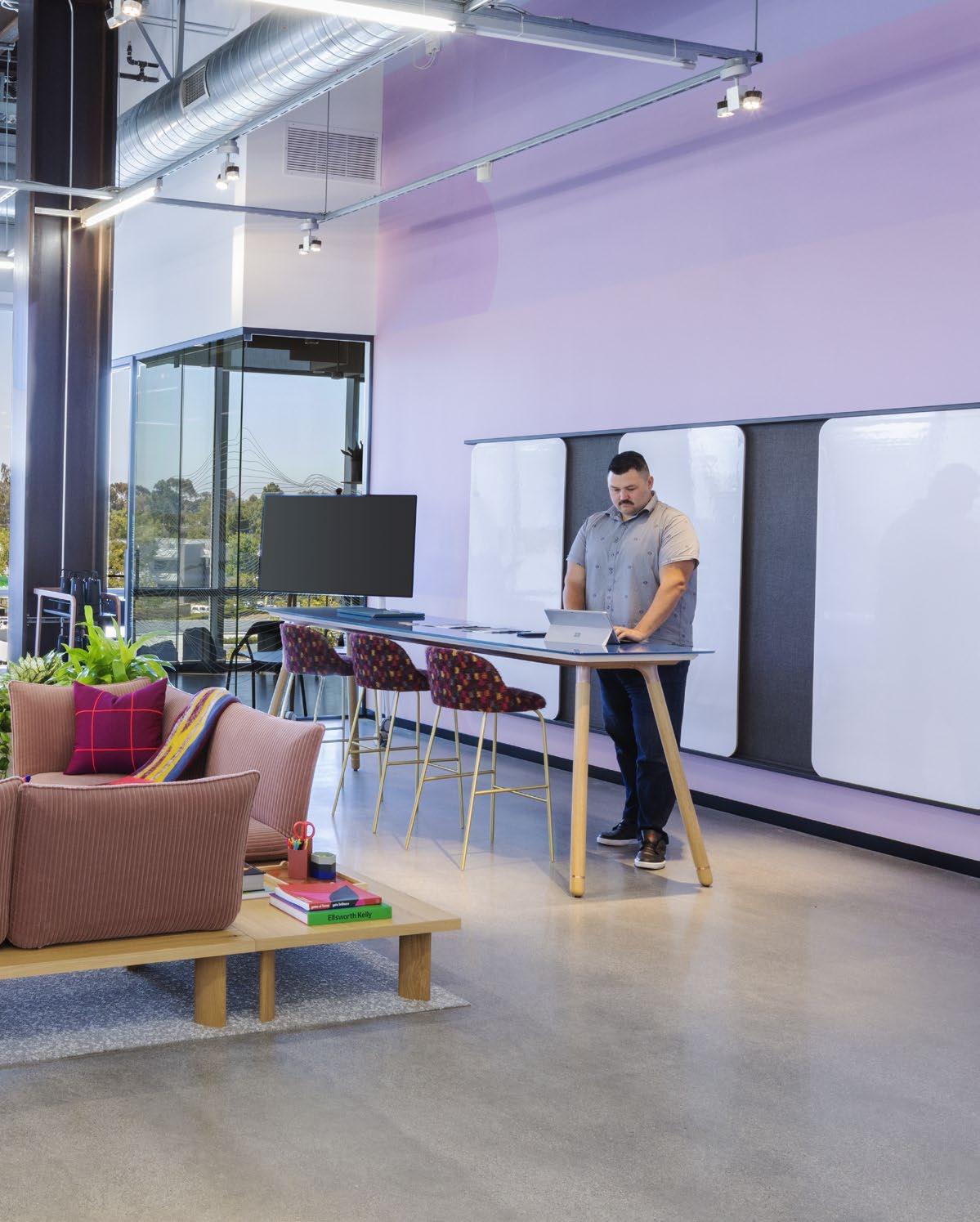
51 A Tangram Interiors Magazine

52 Puzzle: The New Office
Lochlyn offers brilliant work, storage, and space division solutions for commercial areas or home environments. From cozy and welcoming nooks to productive and highly functional spaces, Lochlyn allows you to showcase your personality. The shelves and metal frame cube units can be anchored to architectural walls, providing installation flexibility. The cube units accept cubbies with open top, open front, or pass through abilities, along with trays, and shelves, giving you the ability to add biophilia, decor, and resource materials to transform any space. Lochlyn’s drawer and door capabilities add organizational functionality and the ability to conceal items behind facades.

A Tangram Interiors Magazine 53



LOCHLYN 54 Puzzle: The New Office
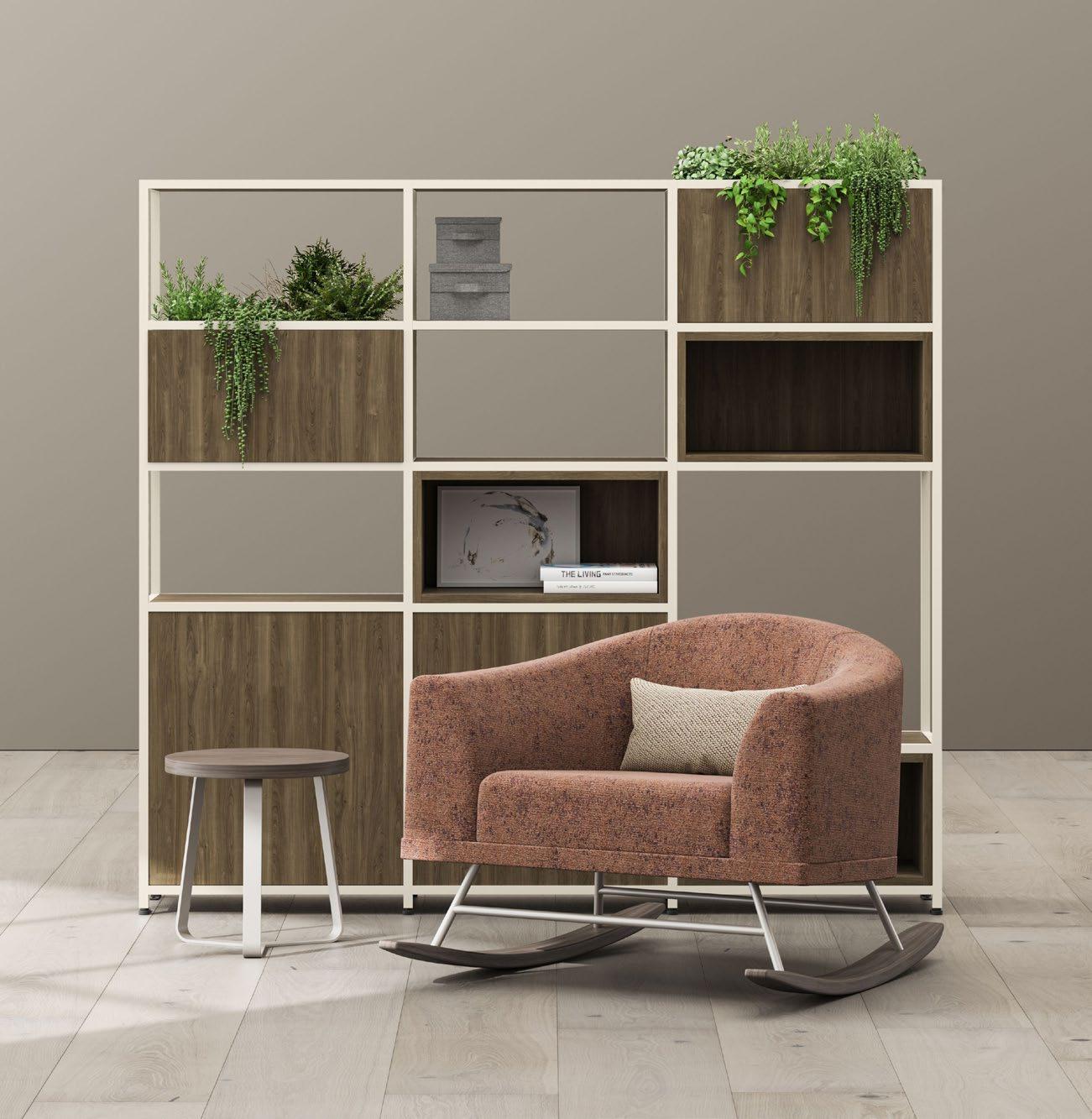
55 A Tangram Interiors Magazine
The go-to place for getting things done, Tia Team is the media-ready table where concepts — and collaboration — thrive. With the optional monitor mount, you can seamlessly share visuals and presentations with your entire team, whether they’re gathered around the table or off-site working remotely.


56 Puzzle: The New Office
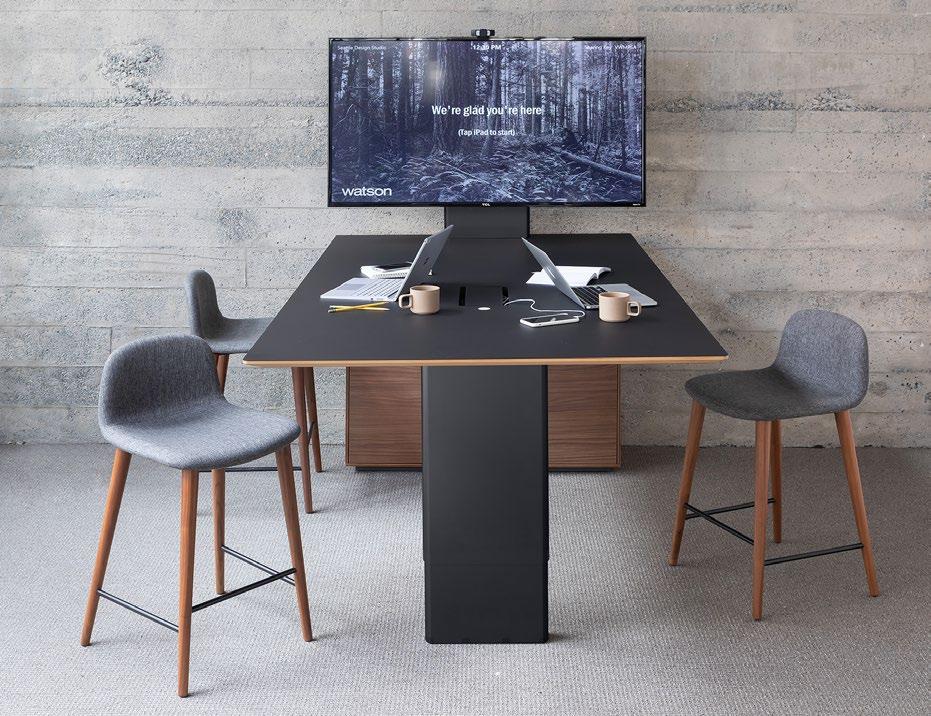
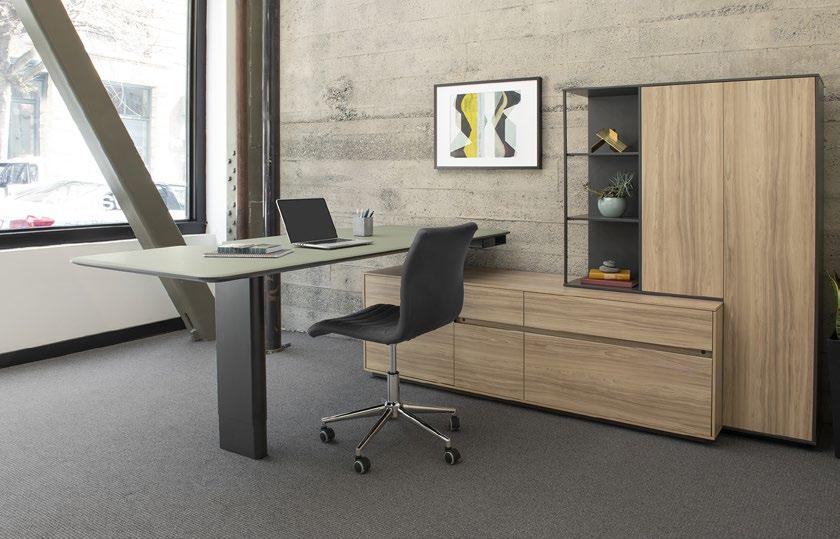
57 A Tangram Interiors Magazine
Dancing Wall is a mobile partition that can be used to flexibly divide offices into zones, while providing vertical and horizontal work space. Diverse combinations of different Dancing Walls can create varied office layouts and work situations, and be spontaneously adapted to changes in team size or room function – without renovations, without a fitter. Thanks to this modularity, Dancing Wall is perfectly in tune with the changing requirements of the modern working world.

Dancing Wall consists of a metal frame that can be equipped in various configurations: as a bookshelf, TV unit, coat rack, plant wall, or as a room divider with removable magnetic whiteboards and pinboards. The design also allows for the integration of power cables and functional accessories, such as containers, hooks and covers, which can be custom specified to suit the company’s needs.


58 Puzzle: The New Office

59 A Tangram Interiors Magazine

60 Puzzle: The New Office
Comma is an expression of the dynamic spirit of a new generation of entrepreneurs, who wish to challenge the codes and rules of the 20th century and cannot relate to the traditional office layout.

Comma follows the function – and aesthetic – of scaffolding. Consisting of a few individual elements available in a kit of parts, Comma can be easily configured into diverse structures that define the space and the work processes to be conducted. The system’s frame elements are assembled using the so-called claw. The same set of parts can be reconfigured time and again thanks to the claw, with countless possibilities. The addition of table tops, electrification modules and other add-ons or accessories is quick and easy. The screens that serve as back panels for shelf units, as partition elements or as privacy shields, are made from upcycled single-use plastic. They are Cradle to Cradle Certified ™ and contribute to acoustic damping.

61 A Tangram Interiors Magazine
“Comma is part of this change in the office world. The system is a way to prepare for the future. Unlike conventional furniture, Comma is an investment in a flexible office environment that can be continually redesigned.”

 Christian Grosen, Chief Design Officer, Vitra
Christian Grosen, Chief Design Officer, Vitra

COMMA
62 Puzzle: The New Office

63 A Tangram Interiors Magazine

64 Puzzle: The New Office
From spontaneous conversation in the workplace to informal collaboration on campus, casual dining to focused study, Reef addresses today’s demand for multipurpose spaces. Integrated shelves, optional power and an extensive finish palette provide the platform for communal gathering.

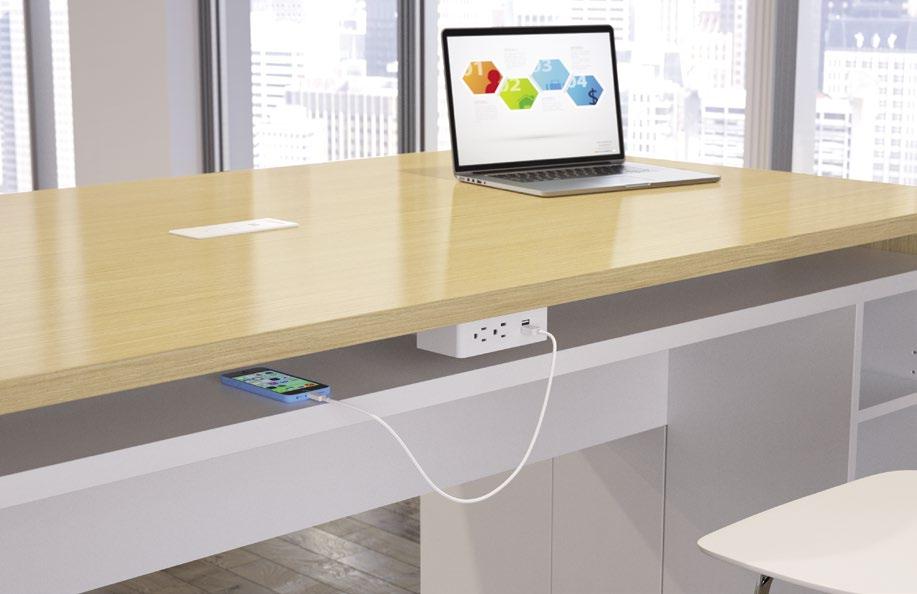
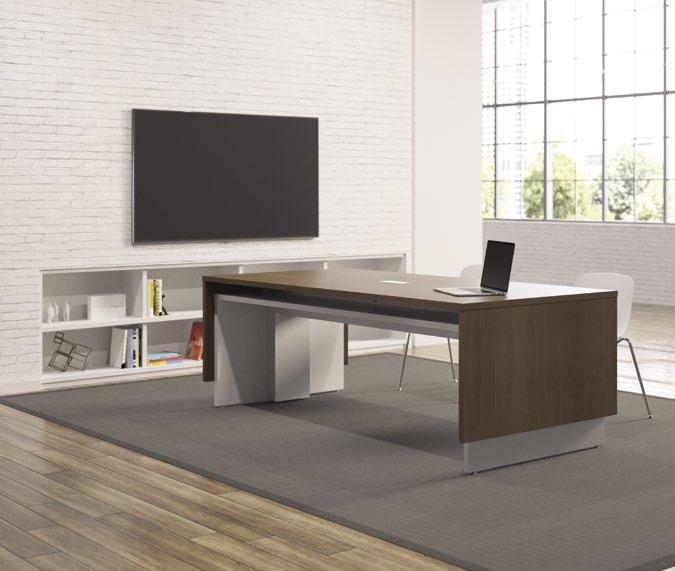
65 A Tangram Interiors Magazine

66 Puzzle: The New Office

SAVINA 67 A Tangram Interiors Magazine
The Savina design sofa joins the collection of collaborative furniture to enhance soft collaboration. An innovative cloud sofa that presents a new universe of comfortable working solutions for every office, workplace, home, hotel, or hybrid space.
With this modern sofa, Viccarbe reinterprets the feeling of sitting on a cloud or floating on water. A collaborative island that can be personalized to suit every requirement and moved easily thanks to its optional hidden casters. A flexible seating solution for collective spaces conveying both visual and physical comfort, designed to nurture synergies and bring the most pleasant working and lounging experience.

Choose from dynamic hidden casters, armrests, discreet electrifications, accessories, and upholstered seat modules to create your own Savina sofa.


68 Puzzle: The New Office
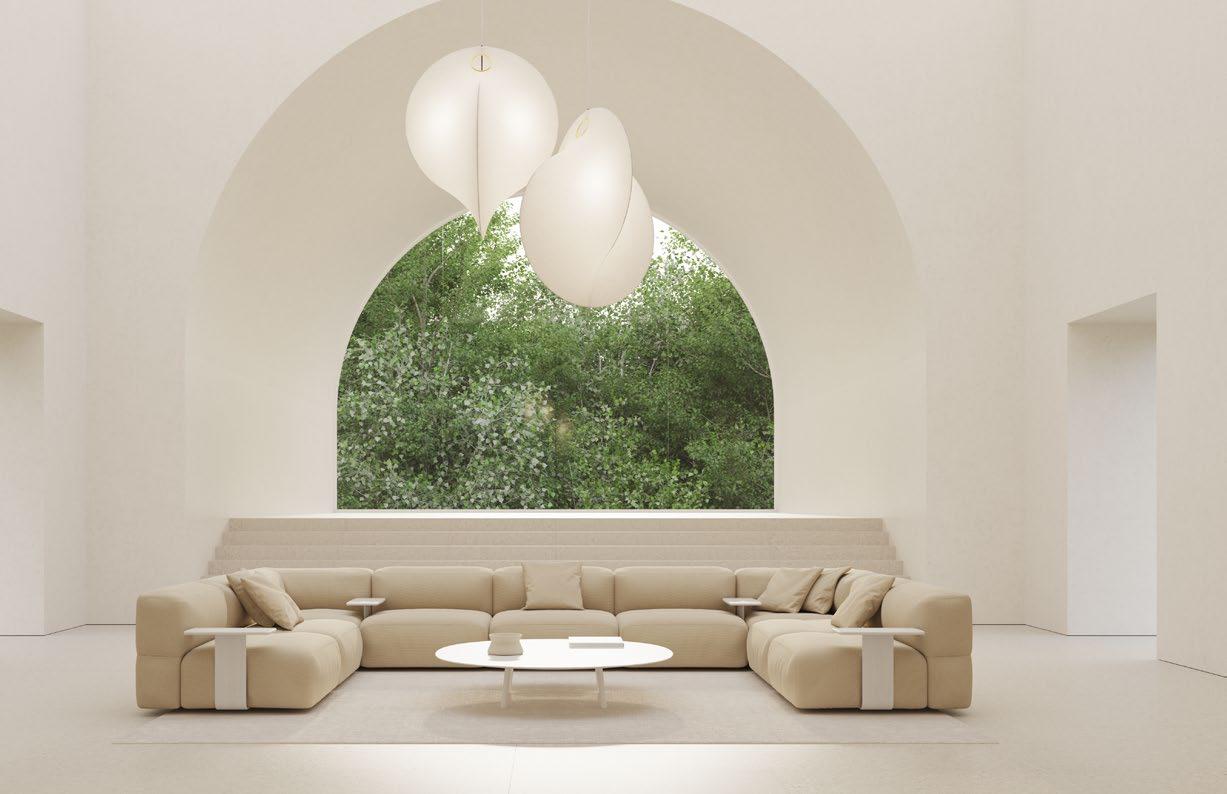

69 A Tangram Interiors Magazine
A seating system and family of products that offer endless solutions, BOB lends architectural freedom that challenges or adheres to all interior spaces. The multiple award-winning modular seating system cultivates creativity in the workplace and lends comfortable styling to hospitality environments. Designed to add character, and with a boastful personality, BOB is constructed using individually upholstered modules that are completely customizable.
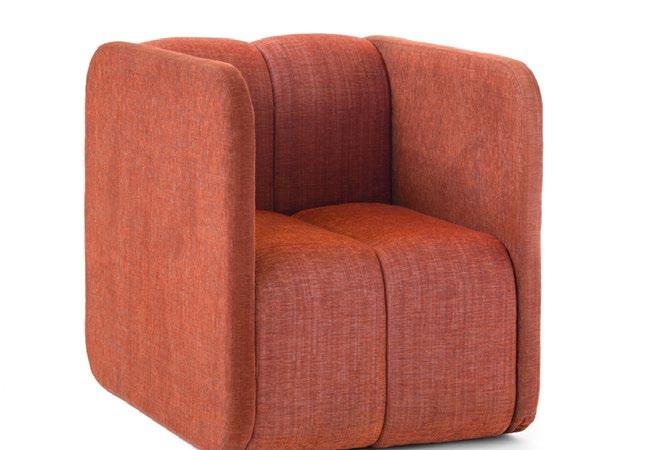

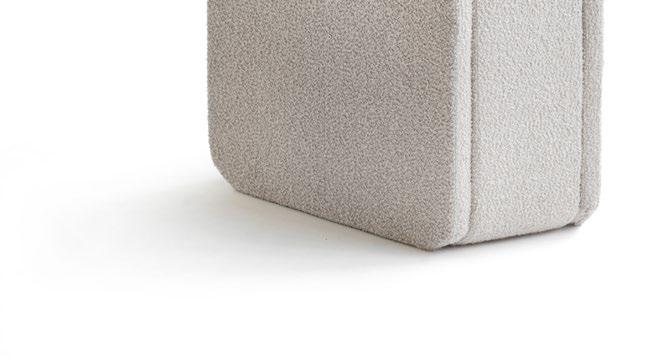
A seating system that curves in, curves out, lines up straight, or undulates across the room - BOB’s creative possibilities are extraordinary. In addition to a variety of sofa arrangements, BOB’s be-anything attitude effortlessly transitions to become a bench, ottoman, or lounge chair. Handsome and functional, BOB offers power outlets, removable side tables, and a range of custom capabilities to create the all-day workstation. With rounded curved corners and a sleek low or high back profile, BOB’s artistic style provides a visually alluring place to ponder. Dedicated to reinventing the ordinary, designers Stefan Borselius and Thomas Bernstrand have engineered furniture that fulfills the desires, dreams, and demands of current design.

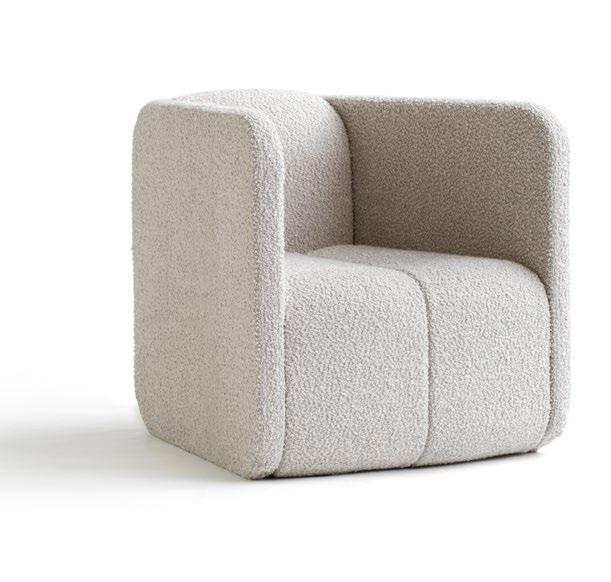
70 Puzzle: The New Office
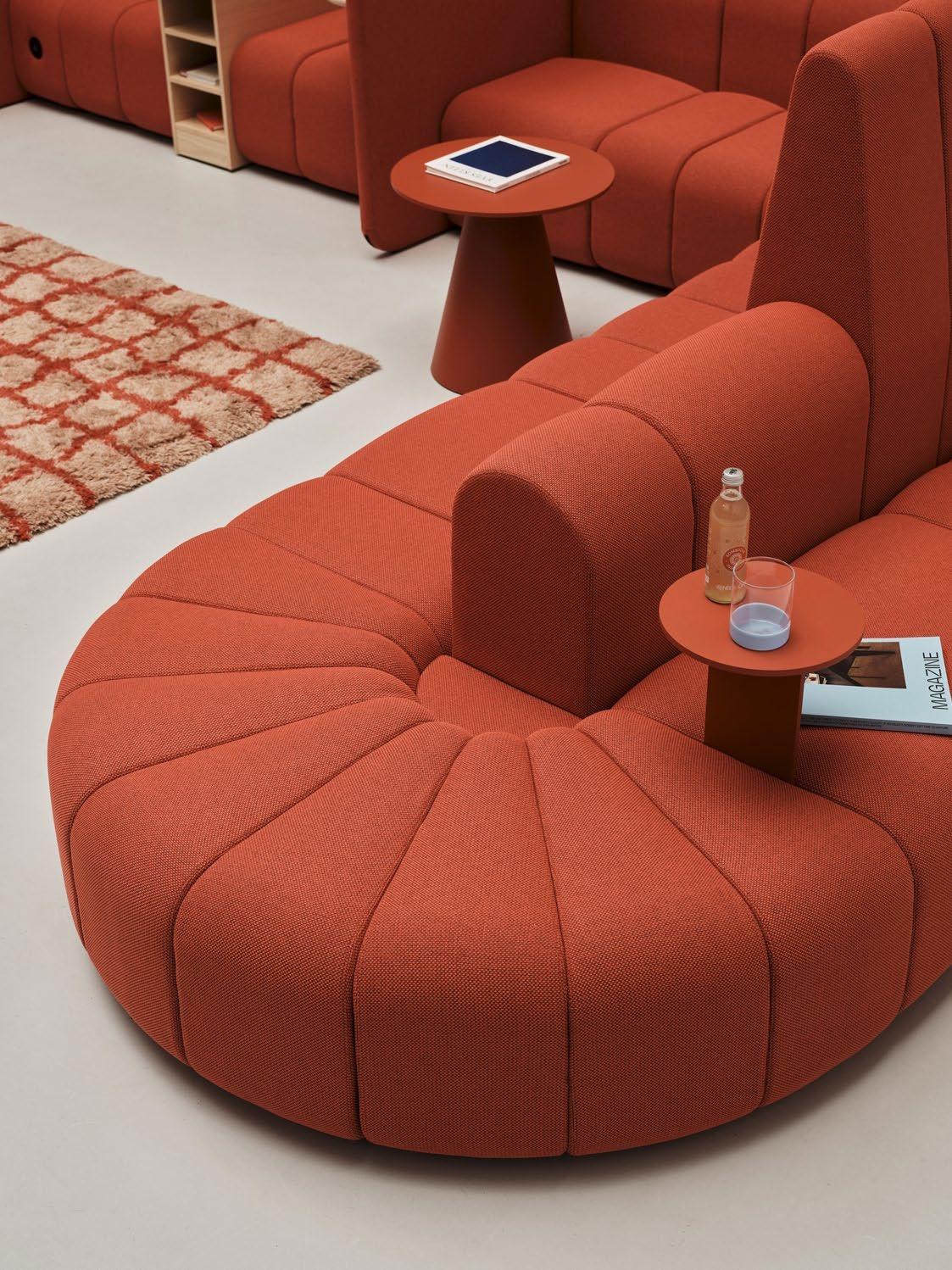
71 A Tangram Interiors Magazine

72 Puzzle: The New Office
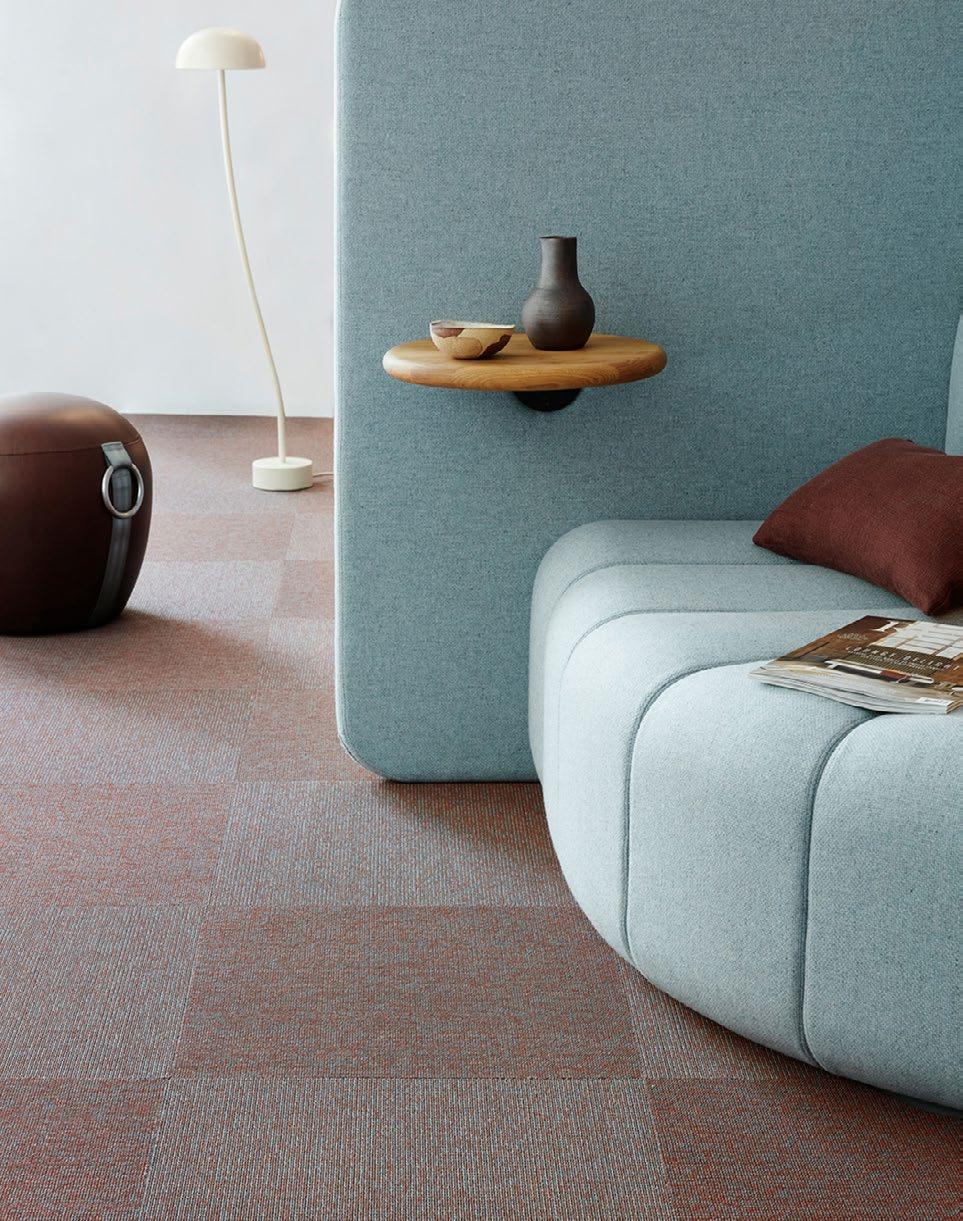

BOB SEATING SYSTEM 73 A Tangram Interiors Magazine
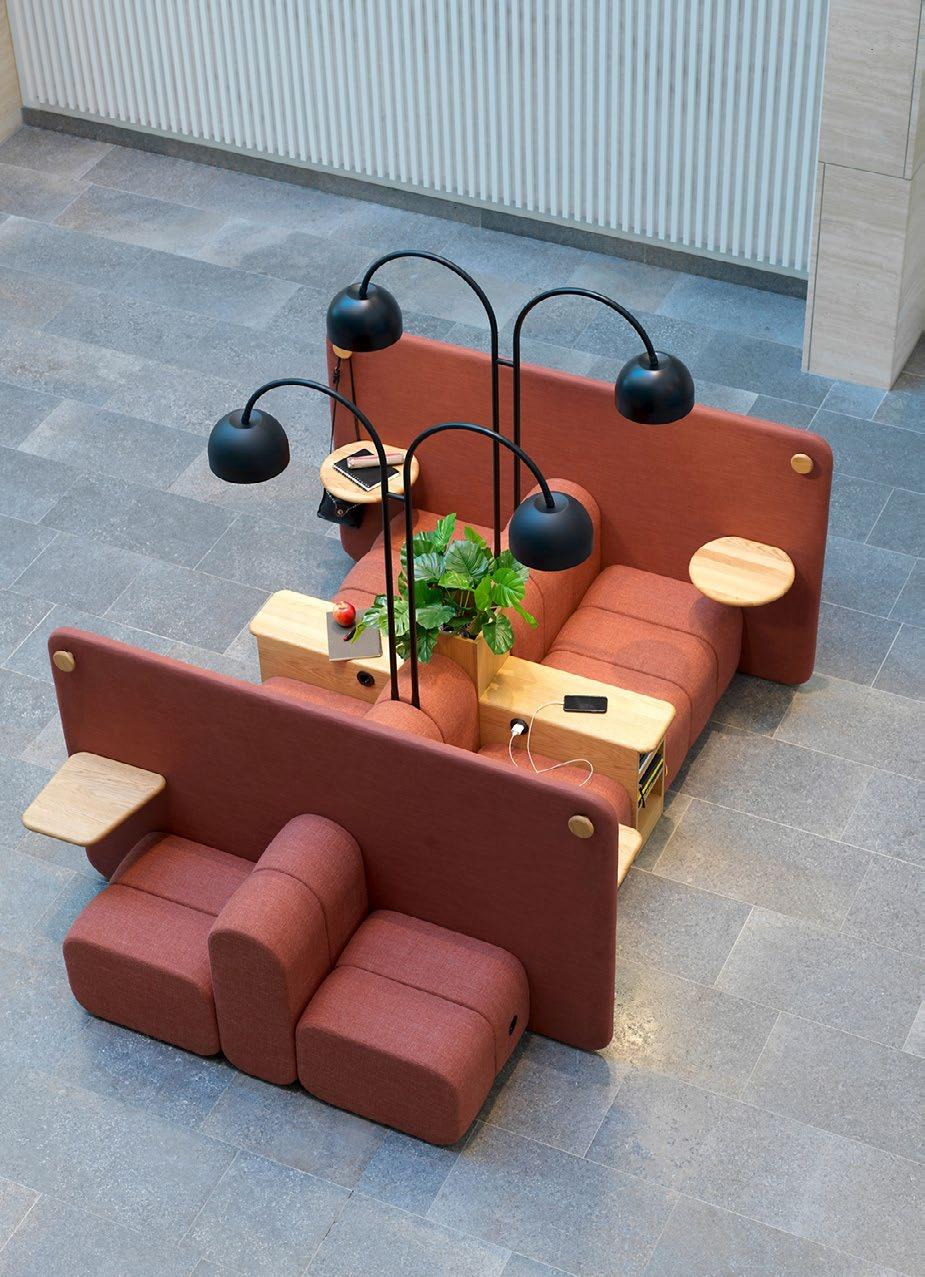

74 Puzzle: The New Office

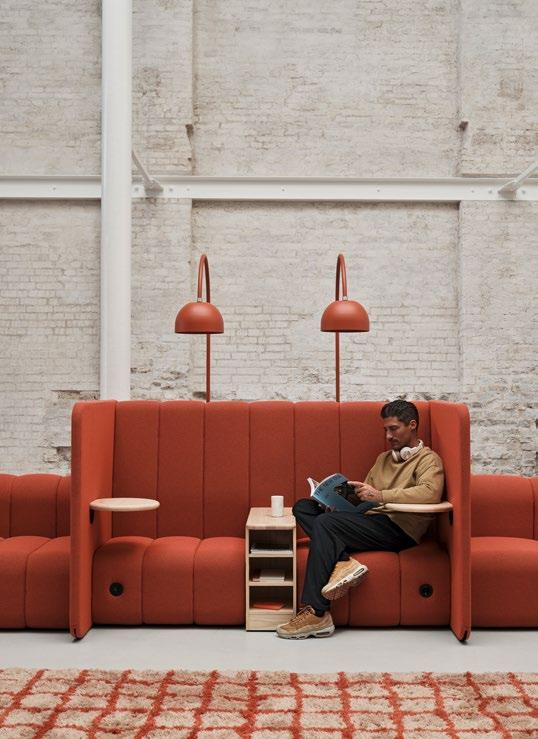


BOB SEATING SYSTEM 75 A Tangram Interiors Magazine
Vagabond is a mobile workstation on casters to move wherever, whenever. Flexible by design and adaptable by nature, the Vagabond series differentiates itself by its creativity and recognizable form.
Built on easy-to-move casters that effortlessly lock into place, the table allows for a wide range of functions. The colors, shapes, and materials promote balance and harmony in the workplace. The table height on the workstation is available at dining, counter, or bar to accommodate the progressive office or trend-setting restaurant. Add-ons include hooks to store belongings, steel accessory boxes, whiteboards, and complementing magnets to hang inspirational photos, messages, and sketches directly onto the frame.

Each station has a unique quality that lends the series versatility. The Vagabond workstation includes a rod across the top to hang lights, plants, or additional interior fittings. The split-level frame combines dining and counter heights to foster a creative workspace. The work conference table offers hardware to mount a screen on one side to accommodate hybrid meetingseffortlessly integrating in-person with virtual.

76 Puzzle: The New Office

A Tangram Interiors Magazine 77
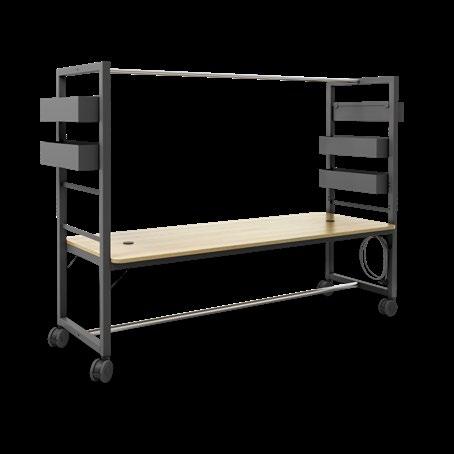



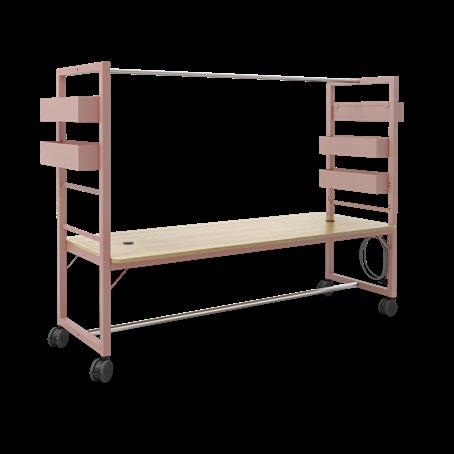


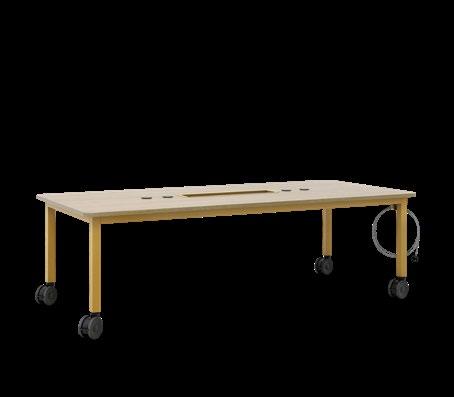



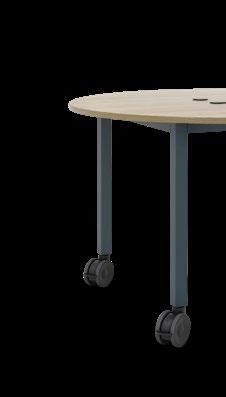

VAGABOND 78 Puzzle: The New Office
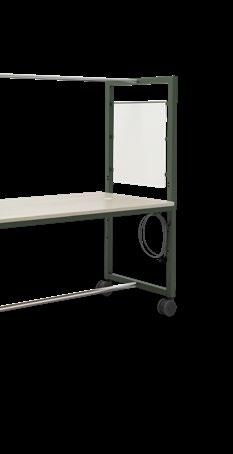

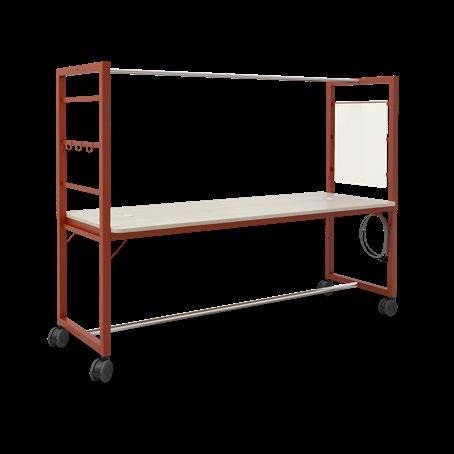
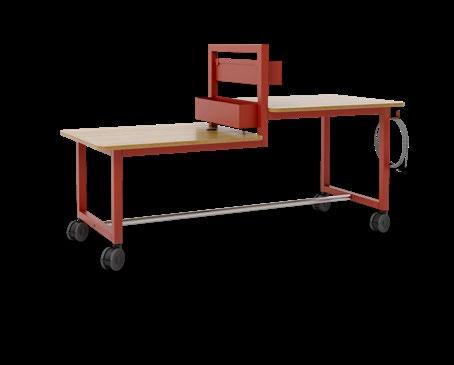



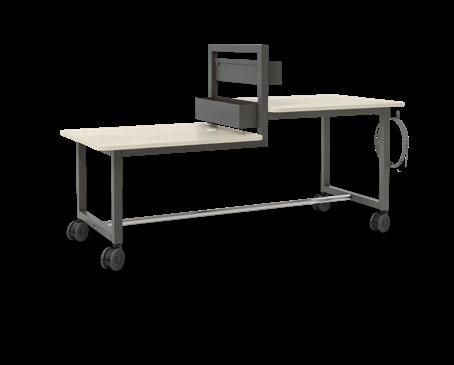



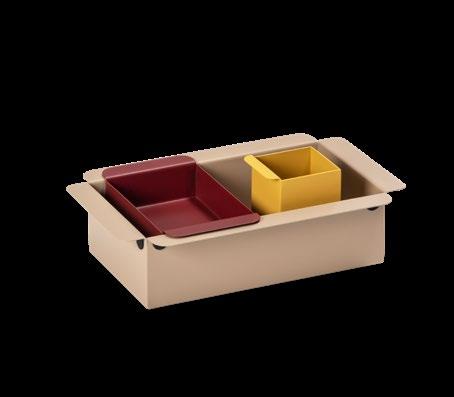
79 A Tangram Interiors Magazine

80 Puzzle: The New Office


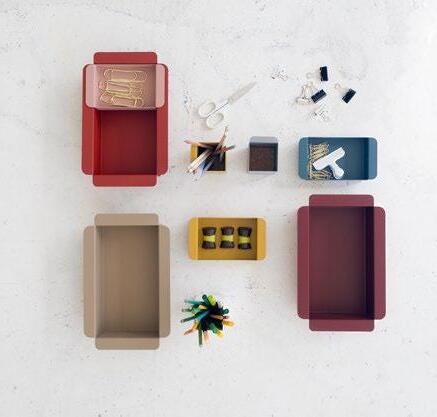

81 A Tangram Interiors Magazine
VAGABOND
Free Address 2.0 offers designers a onestop solution to fill the floorplate of an open office space with a furniture system that supports the many different tasks and activities that fill a dynamic modern workplace.

Whether it’s used for heads-down focus, team collaboration, quick touchdowns, or impromptu lunch gatherings, Free Address 2.0 provides a dynamic, spontaneous environment that encourages collaboration and fosters community.

82 Puzzle: The New Office

83 A Tangram Interiors Magazine
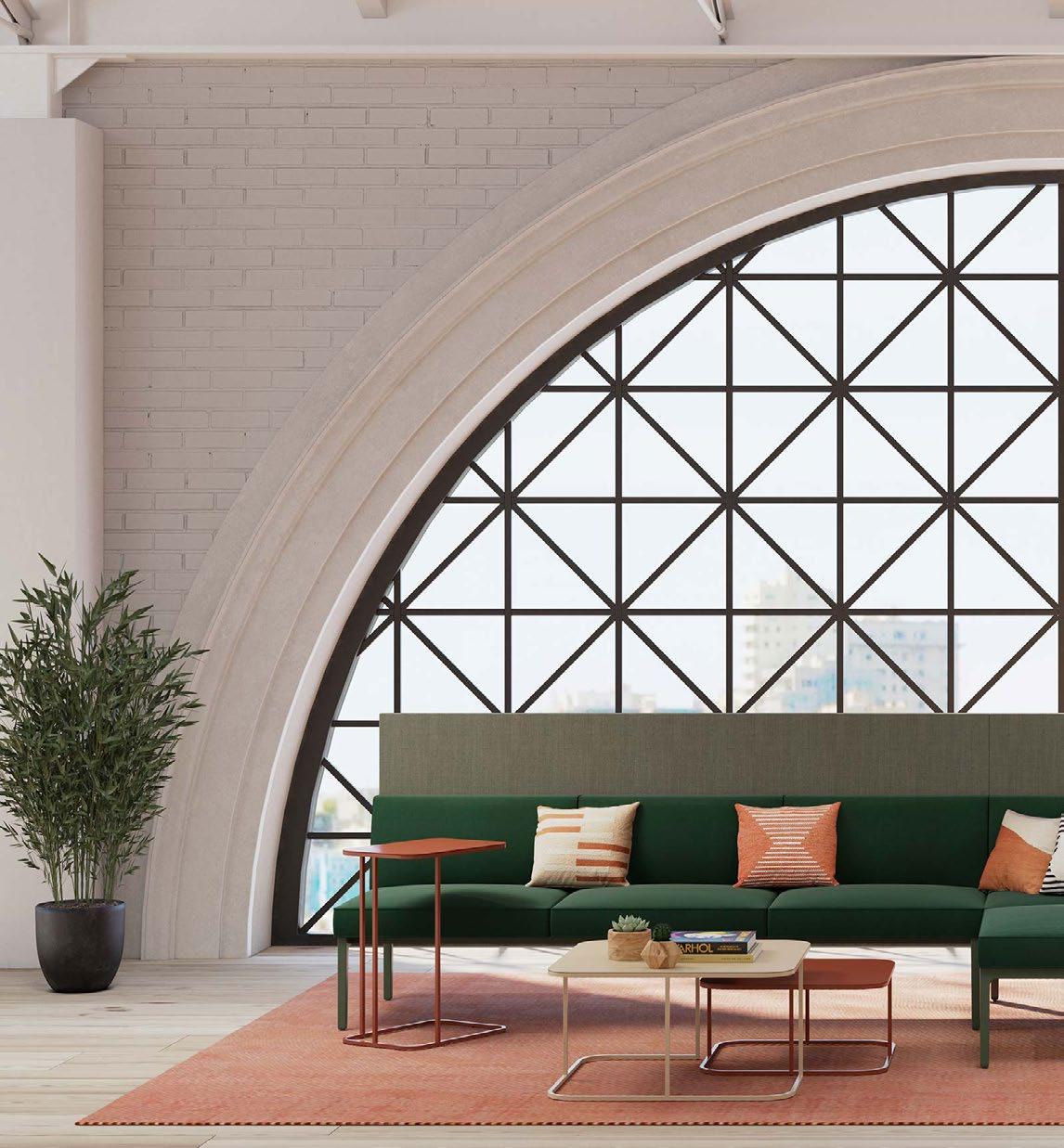

FREE ADDRESS 2.0 84 Puzzle: The New Office

85 A Tangram Interiors Magazine
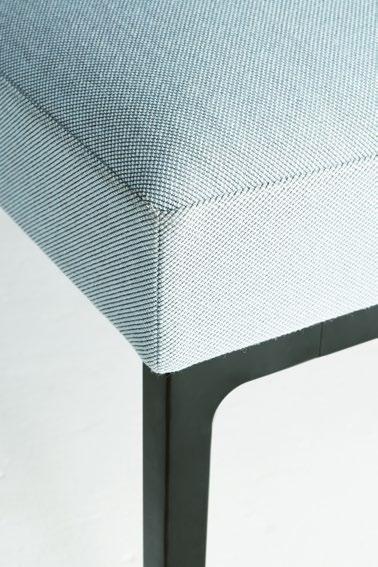



FREE ADDRESS 2.0 86 Puzzle: The New Office

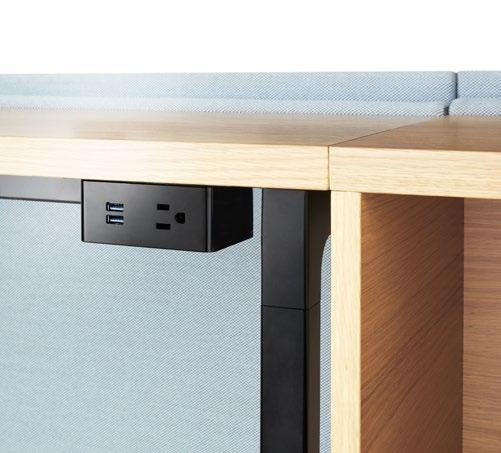

87 A Tangram Interiors Magazine
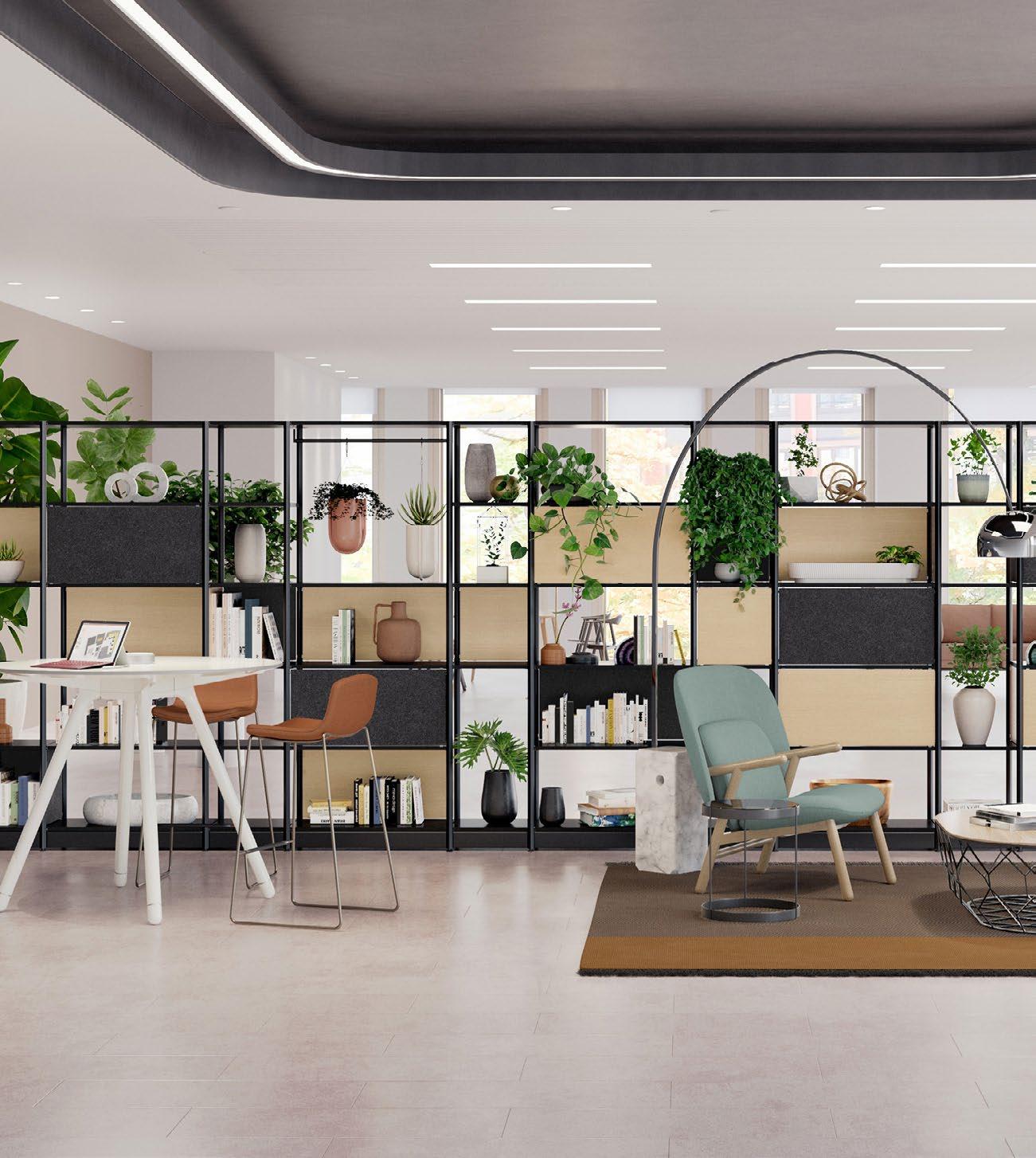
88 Puzzle: The New Office
Steelcase Flex Active Frames are adaptable structures that define space by creating productive, flexible and inspiring homes for teams.

The Steelcase Flex Collection is a range of flexible and reconfigurable workplace solutions that are designed for dynamic, collaborative teams. The collection allows organizations to provide environments teams and individuals need to do their best work, and empowers people to adapt their space on demand. Learn more about Steelcase Flex Collection and how it creates dynamic team neighborhoods for high-performing, collaborative teams.

89 A Tangram Interiors Magazine




FLEX ACTIVE FRAMES 90 Puzzle: The New Office

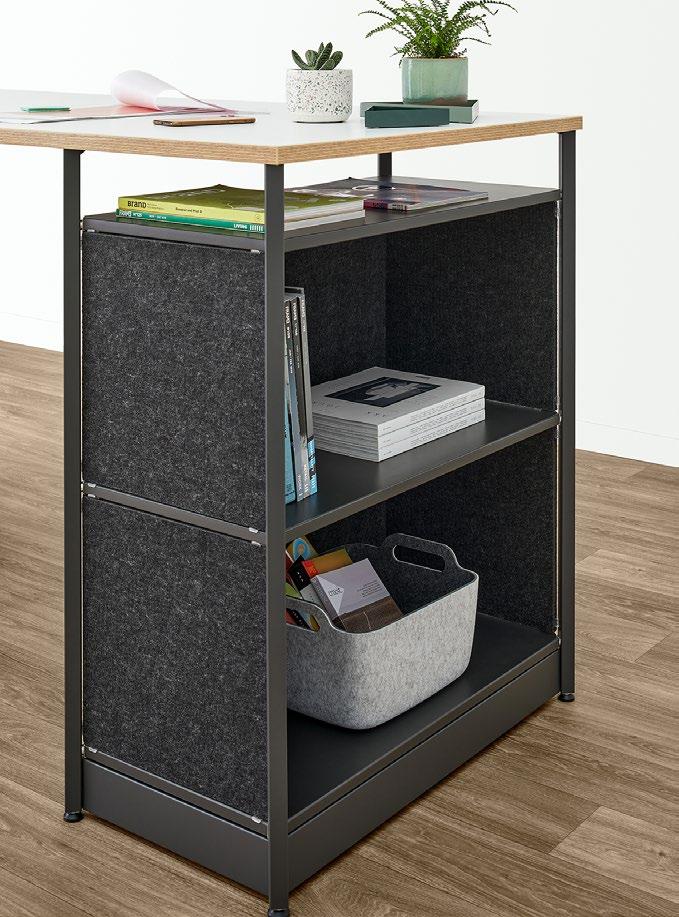
91 A Tangram Interiors Magazine


FLEX ACTIVE FRAMES 92 Puzzle: The New Office

93 A Tangram Interiors Magazine
Destination Office What returning to the workplace looks like IRL
An anecdotal look at how our network is encouraging employees back to the office, what’s working, and what employees need from their office today.
Torie Hamilton
Given that we’re in the business of workplace interiors, Tangram has been looking forward to the homecoming of return-to-office (RTO) when restrictions were lifted, and tides had societally shifted. When the doors opened and hordes of employees weren’t waiting in anticipation to come back to work, we began a hard internal organizational evaluation of what we offer as a physical office.
“Our motto since the initial discussions around returning to the office has been ‘make the office a magnet, not a mandate.’ We wanted to heavily invest in our offices and culture to create a workplace experience so magnetizing that our employees would want to come back,” says Joe Lozowski, Tangram CEO + President.
Refreshes across all office locations, added amenities, and a greater focus on social events and celebrations any chance we get have helped reenergize our offices with a higher employee return, not to the pre-covid level, but to a degree that is noticeable.
When speaking to clients and partners, it’s clear that this RTO journey is a shared experience across most industries. While we bring our expertise to how we approach today’s workplace on projects and within our own organization, we’re happy to admit we don’t have the answers to how to get employees back to the office. And neither does anyone else, as made evident by the mixed messaging you’re likely hearing.
We have a varied and valuable circle of clients and partners, so we reached out to a small group of them to ask about their RTO strategy and what’s been working for them. Here are the insights and common threads pulled from those conversations.
94 Puzzle: The New Office

A Tangram Interiors Magazine 95
2-3 days, Tuesday-Thursday seems to be the sweet spot. According to recent Steelcase research, 70% of employees globally are working 3 days or more in the office, on average, with leaders and Gen Z more likely to be in the office.

Large tech companies like The Trade Desk, a media buying platform, are more on the flexible side because it’s an officeby-office scenario, and roles like engineers are more heads down with teammates spread out globally.
On the other hand, more relational-based companies, like Creative Arts Agency, a talent agency, are organically seeing higher office usage because employees are meeting clients in-house, while Canvas Worldwide, a media communications agency, requires at least two days in office that are determined by each department head.
Edwards Lifesciences, an Orange County-based biotechnology company, is an essential business that never closed its doors, so their initial strategy of maintaining a safe campus naturally evolved into their return-to-office strategy when the time came. They implemented three designations in 2021: Onsite, Share and Flex. An employee would be Onsite if they are in office 80% of the time, 4 days a week. This employee gets their own cubicle or office with their name on it. Share is for two employees who share an office or cubicle and come in 2 days a week, working amongst themselves to choose non-overlapping days. Lastly, Flex is for employees who come in once a week or every two weeks. These employees
use the company phone app to be assigned a desk in their department, with the ability to reserve a desk up to a week in advance.
Your office space is your greatest asset.
“I think the biggest thing for us is creating a space that people want to come to and they feel welcomed and it’s inviting. Then they’re going to come,” says Chelsey Berend, Director of Global Marketing & Communications for Ecobat, the world’s biggest recycler of batteries.
And come they did, as Ecobat is currently experiencing a 100% employee return rate to their brand-new Uptown Dallas office.
You can’t expect employees to return to the same office experience pre-pandemic, but this may be the right opportunity to rethink and reimagine your workspace to accommodate and enhance your employees’ day-to-day experience.
For many organizations, surveying your employees can help drive the data points for their wants and needs. Gensler, architecture and design firm, is renovating their Los Angeles office and enlisted their design and consulting team to meet with each studio, made up of 30-50 employees, to learn what people are looking for in their office space.
“It really is a ground-up design process,” says Mark Zwagerman, Gensler Director of Media Practice. “A lot of our clients are asking the same questions. So the whole process we’re going through in our own office is very relevant to the
Most companies are encouraging their employees back 2-3 days a week, typically Tuesday-Thursday, depending on the industry.
96 Puzzle: The New Office
Edwards Lifesciences Rooftop, Irvine, CA
conversations we’re having with our clients. It’s really helping us develop that approach on how to go about re-imagining the workplace of the future.”
LPA Design Studios, a design and architecture firm, opened their San Diego office in October 2022 and has seen the highest RTO rate across all their locations with a 90% employee return. Because of this space’s success, they’re currently conducting research to better understand how each setting is being used with interactive keypads in all spaces where users can give immediate feedback on everything from temperature to furniture selections and placement.
Focus on smaller meeting spaces over large conference rooms
A 12-person meeting will most likely not bring 12 (physical) people to a conference room. Due to the new norm of mixedenvironment meetings, smaller meeting and huddle rooms are in high demand.
If you’re working in Canvas Worldwide’s LA office, you’ll be hard-pressed to book a smaller meeting room last minute Tuesday through Thursday because they’ve all been reserved.
The Trade Desk is seeing higher utilization of 1-2 person Zoom rooms and 4-6 person huddle rooms and is investing in more for that reason.
As Gensler is renovating their LA office, they’re adding more 2, 3 and 4-person meeting rooms since those are already highly popular.
Private spaces are the ultimate perk
While messaging is generally that people come to the office to collaborate, Steelcase recently published research that people spend 53% of their day working alone. That’s why it’s more important than ever that offices offer spaces where workers can go to think, clear their heads and focus more deeply.
With today’s hybrid workforce and more video calls than ever before, an open floorplan can prove too distracting, not allowing for focus or private conversations. Therefore, investing in personal spaces allows users to tackle office overwhelm, get things done and take their calls in a quiet space.

A majority of our clients and partners mentioned they’ve either invested or are planning in investing in more phone booths to allow for a quick private option. All employee needs must be considered – while many employees come to the office with the purpose of collaboration, those who are coming to complete a long list of tasks shouldn’t be overlooked.
Emphasis on soft, collaborative spaces
Employees have grown accustomed to their comfortable homes and soft surfaces, so employers are bringing the home to the office.
Ware Malcomb, a design firm, upgraded acoustics and soft lighting with dimmers in their Irvine headquarters to create a comfortable environment for their collaborative spaces.
Gensler is introducing more biophilia and softer, warmer, comfortable settings.
Ecobat broke up desks in the open office with little living rooms of open collaborative seating.
Edwards Lifesciences invested in their outdoor spaces to create a more open, residential feel for employees who want to enjoy the Southern California weather.
Improved tech in private offices, meeting rooms, and large social spaces
Steelcase research published that over half of all meetings (56%) are spent on video, so updated technology in meeting rooms is no longer an option but a necessity.
A Tangram Interiors Magazine 97
The Trade Desk Office, San Francisco, CA
“If you build a conference room that isn’t video conference ready, it’s a waste of time and space because you’ve got to believe that any meeting is going to be a hybrid meeting,” says Tom Porter, Edwards Lifesciences Senior Vice President, Corporate Services.
Beyond shared conference rooms, Edwards Lifesciences ensured that every private office is equipped with Microsoft Teams and an additional seating area in addition to the workstation so that the office can become a mini-conference room when needed.
The tech consideration didn’t stop at private meeting spaces for this company, they also equipped their large auditorium space with a camera that zooms in on whoever is speaking to create equity and inclusivity for all-hands meetings.
“If you don’t feel a part of the meeting, then you’re not really adding value. So it’s really important that you create that environment and that’s what we try to do with our space,” says Porter of Edwards Lifesciences.
Gensler has revamped all AV in their LA office to allow for simple plug-and-play, hybrid capabilities in every meeting room and large social spaces, and a general major tech refresh that allows for connection anywhere.

“We live on five different floors, so being able to walk around the entire office with your laptop and not have any connection issues and being able to step into any meeting room and have it work is kind of a big deal,” says Zwagerman of Gensler.
Choice, flexibility, and neighborhoods
Some organizations are maintaining 1:1 desking, but there’s been a 15% drop in assigned seating in the last year, according to Steelcase research, to allow for more variability in soft spaces with an emphasis on choice and flexibility. Creating neighborhoods within the office, with a mix of private and public spaces, allows for social infrastructure and choice in work style.
LPA Design Studios’ San Diego office, with a 90% employee return rate, infused agility and flexibility into their designs, ensuring every piece of furniture is movable and has a place to plug in.
“There was really intentional and thoughtful design around being agile and flexible in terms of how we work,” says Wendy Rogers, LPA Design Studios CEO. “It’s a space that’s much more conducive to that flexibility and choice.”
Using employee surveys and data as the basis for their LA office design, Gensler’s employee needs—while varied—were clear.
“The fact that there’s so much diversity within our organization drove the diversity of work points that we ended up designing. I think that was the biggest takeaway, that it’s not just one solution. Everybody has slightly different needs and works in slightly different ways,” says Zwagerman of Gensler. “We have lots of different types of work modes and we’re trying to give a lot of variety, a lot of choice to everybody when they come to the office, and remove any barriers or obstacles that might exist for collaborating with your teammates.”
Beyond what lies within an office’s walls, the surrounding exterior neighborhood can serve as a huge employee perk. Walkability to lunch spots, coffee shops, and bars for impromptu happy hours allows for choice to continue to play a role in the workday, inside and out. This was a major factor for Ecobat in their brand-new Dallas office location.
“A part of the amenities consideration was what does the building in the neighborhood provide? A big piece for us in moving to Uptown Dallas was for people to be able to go downstairs and walk to get lunch wherever they want and get outside,” says Berend of Ecobat.
Puzzle: The New Office 98
LPA Design Studios’ Office, San Diego, CA
“Company culture, big word. Everyone throws it everywhere. Each company does have its own vibe, its own posture, its own attitude,” says Sue-Meng Lau, The Trade Desk Senior Director, Global Design & Construction. “I don’t know what the secret sauce is. All I know – and I’m biased because I build spaces – is that a physical office is not even just a foundation, it’s the House. It is the manifestation of the company culture.”
Within every conversation, there was one common thread: The office is most valuable for how it cultivates deeper relationships, a tangible culture and shared purpose, and innovation based on trust.
“I don’t think people are going to drive an hour and a half for free food. That’s not a driver, pardon the pun, to get people in the office,” says Michael LoVaglia, Canvas Worldwide Associate Director, Facilities. “People want to socialize with their coworkers. They really have to see the value of an office in a different way before Covid.”
Experiencing your colleagues face-to-face in a space that fosters organic connection and collaboration creates a work experience that will inherently and vastly differ from remote work.
“The main thing that going to the office does is enhance human connection, makes it 4K versus more analog when we’re connecting digitally. It’s fully immersive and you really get everything about the other person that you’re trying to communicate with,” says Ted Heisler, Ware Malcomb Vice President, Interior Architecture and Design.
With human connection comes deeper and richer relationships, leading to trust and more authentic and borderless innovation.
“It isn’t just about the amenities. I think it’s truly about the connection you have with the people you work with and building relationships. You have to work hard to build those relationships within a company. These people are your partners, whom you trust to have your back and at another time you’re going to have theirs, right? Because you’ve built a relationship,” says Rogers of LPA Design Studios. “And those are the things that maybe have been harder to discern over the last three years. There’s a very tangible human component to what it means to come back.”
With the prospect of failure at the precipice of every innovative breakthrough, personal relationships open the door to thinking bigger sans the constraints of doubt.
“We built a campus on innovation and innovation, from everything we’ve seen, is built on one thing. Trust. Innovation comes from failure, you have to be comfortable with failure,” says Porter of Edwards Lifesciences. “So it goes back to those conversations that don’t revolve around work. It’s a combination of both, you build relationships, and those relationships create trust and trust creates innovation.”
Recruiting new talent with a tangible cultural experience
Think back to the first time you stepped foot into the office at your current company. Whatever understanding of the company you brought with you likely shifted as your senses took over and you experienced the office, culture, and synergy firsthand. The office gives an experiential component to an organization’s culture that helps possible new talent feel the company in an incredibly impactful way.
“I’m a firm believer that you don’t get the sense of a company working from a screen. It happens in person,” says LoVaglia of Canvas Worldwide.
Ecobat intentionally chose one large open floor for their new office location so their culture could be a shared and tangible experience for current and future employees alike.

The biggest benefits of the office are culture, relationships and innovation.
99 A Tangram Interiors Magazine
Ecobat Office Reception, Uptown Dallas, TX
“Culture has been a huge piece of creating who Ecobat is and what we stand for. It’s in everything from our values to how we hire people. We can bring people in and what they’re seeing helps them feel Ecobat,” says Berend of Ecobat.
Bringing a prospective employee into a beautiful office with bustling energy can be everything in convincing them this is where they’re meant to be. There is nothing that compares to experiencing an office’s culture as a participant rather than an observer.
“When you bring candidates, oh it’s huge,” says Lau of The Trade Desk. “Most candidates can feel it when they walk through our space. I know what I’m walking into. This is the vibe. This is what I’m going to be getting and I like it.”
Amenities that allow for casual collisions
Most clients and partners reported they see the highest usage and greatest connection in cafés, kitchens, and coffee bar spaces. A modern workplace watering hole of sorts.

Edwards Lifesciences is a leader in workplace amenities, with over 18 campus offerings including multiple sports courts, a gym, a recording studio, a world-class café, and a hair salon. There’s an intention behind these spaces that goes far beyond making a fun and convenient workplace.
“I’m a big believer in casual collisions,” says Porter of Edwards Lifesciences. “That happens in the café, it happens where there’s coffee, on the pickleball court, the track field, all those areas where you run into people, not expecting a meeting, just happenstance. And that happenstance can turn into a discussion around something bigger.”
It’s the one-off jokes, friendly banter, and swapping of weekend stories as you wait for your coffee that not only build connection but also rapport.
“The thing we’ve found is you really have to work at the rapport-building piece more intentionally,” says Heisler of Ware Malcomb. “If I meet somebody at Starbucks and we’re waiting in line, you’re not able to actually do anything so you talk about your weekend or life in general. And so those things that slow you down, I think also help you capture those personal touchpoints that help make a better human connection.”
It’s reasons like this why Gensler hosts all-staff meetings in their Red Zone, a large social space, once a month. They cater lunch and bring everyone together to connect – and they’re seeing really good attendance. According to Zwagerman, their larger social spaces see the most utilization where employees meet for events and clubs.
The Trade Desk is also investing in and rethinking their Social Hubs to include flexible furniture and serve as more than just a café, but also an event space for tech meetups, happy hours and holiday parties. By finding any and every reason to celebrate and bring people together, there’s far more opportunity for casual collisions, valuable conversations and on-the-spot problem-solving without the need for a meeting request.
“I don’t think you get to know your employees as much on a screen because it’s all business,” says LoVaglia of Canvas Worldwide. “You’re not going to set up a Zoom call with your colleague just to catch up on your personal life. That just naturally happens when you’re face-to-face.”
100 Puzzle: The New Office
Edwards Lifesciences Café, Irvine, CA
Employees need to see purpose in their work and company
A majority of our clients and partners shared that their employees need to see purpose and meaning in their work and from the company, a sometimes intangible feeling that is best experienced through in-office synergy.
“I always say the amenities attract people to Edwards and the culture keeps them,” says Porter of Edwards Lifesciences. “If you come in here and you work for six months and the idea of patients and the commitment to saving lives isn’t there by six months, then you are probably not a long-term Edwards employee. It should grab you.”
Additionally, the office experience allows for constant learning from your colleagues – whether consciously or subconsciously – and is instrumental in establishing shared company vision and values.

“There’s a certain maturity and sophistication that comes from listening and hearing from others whom you never would imagine you’re going to get anything out of,” says Lau of The Trade Desk. “It’s not obvious, it’s not immediately measurable, maybe you see it later. But you can only get that in a physical environment when you’re all sitting together and looking at the same vision.”
Thank you to the following participants for your insights – this article would not have been possible without you.
Chelsey Berend, Ecobat Director of Global Marketing & Communications
Cristina Kang, Creative Arts Agency Designer
Mark Zwagerman, Gensler Director of Media Practice
Michael LoVaglia, Canvas Worldwide Associate Director, Facilities
Sue-Meng Lau, The Trade Desk Senior Director, Global Design & Construction
Tom Porter, Edwards Lifesciences Senior Vice President, Corporate Services
Ted Heisler, Ware Malcomb Vice President, Interior Architecture & Design
Wendy Rogers, LPA Design Studios, CEO
Canvas Worldwide, Los Angeles, CA
101 A Tangram Interiors Magazine
OUTDOOR SPACES

ChowNow Office, Culver City, CA 102 Puzzle: The New Office
OUTDOOR SPACES
Outdoor Spaces
Outdoor terraces, greenery and access to natural light and windows are a major feature in plans for new buildings. While initial Covid concerns spurred some of the open-air ideas, they are also aimed at replicating what many employees enjoyed when working from home. Serving as a neighborhood alongside the office, outdoor spaces will serve as an alternative environment to collaborate, socialize, and ‘break bread.’ Additionally, access to the outdoors, natural light and greenery is proven to increase employee wellbeing, a major factor in encouraging employees back to the office.
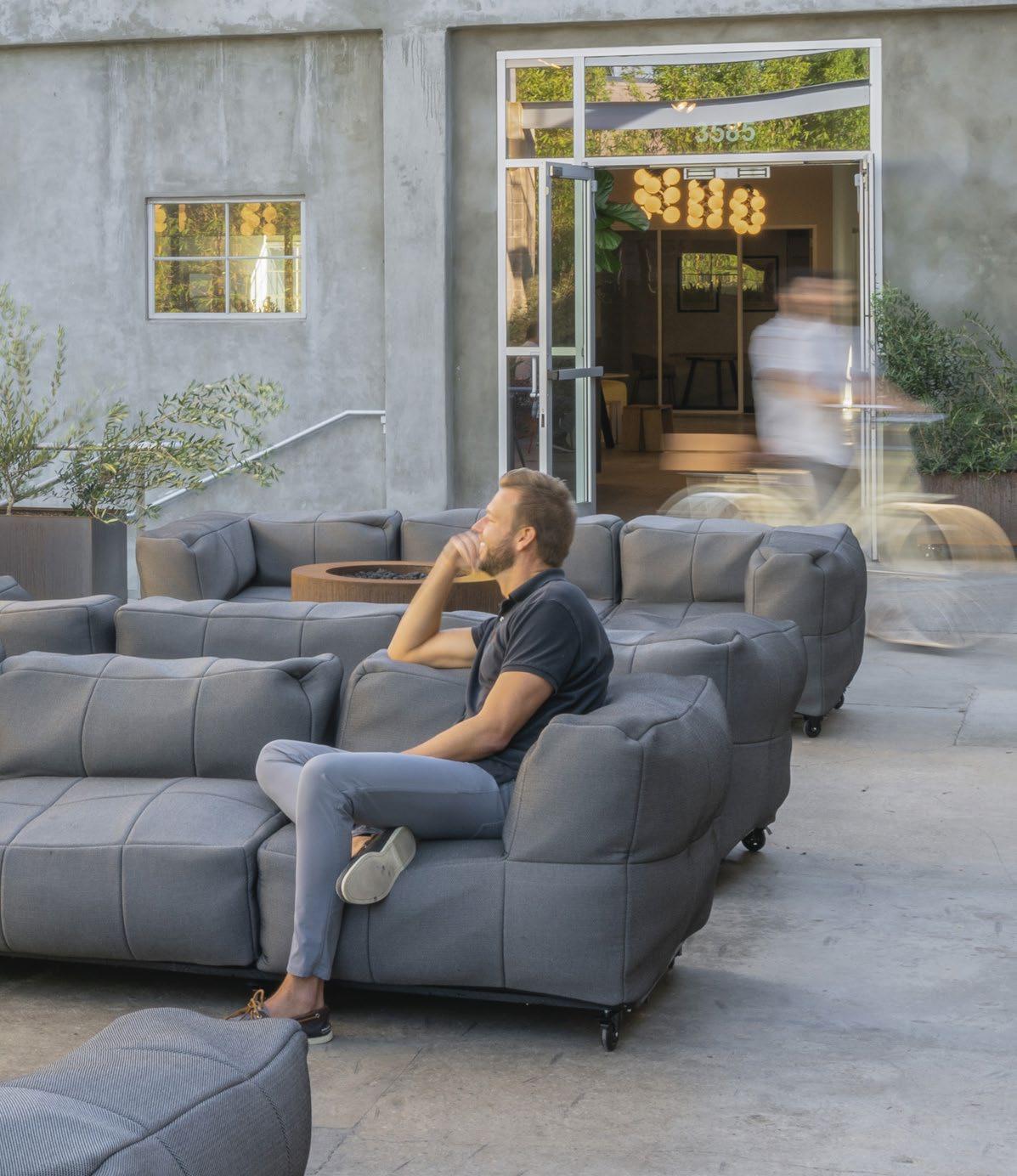
103 A Tangram Interiors Magazine

104 Puzzle: The New Office
A reinterpretation of an iconic picnic table, Mass enables effortless connection and captures the unparalleled sense of gratification that comes from time spent with friends. A truly accessible experience for all, Mass demonstrates that there is nothing more important than creating an inclusive space and finding our place at the table.

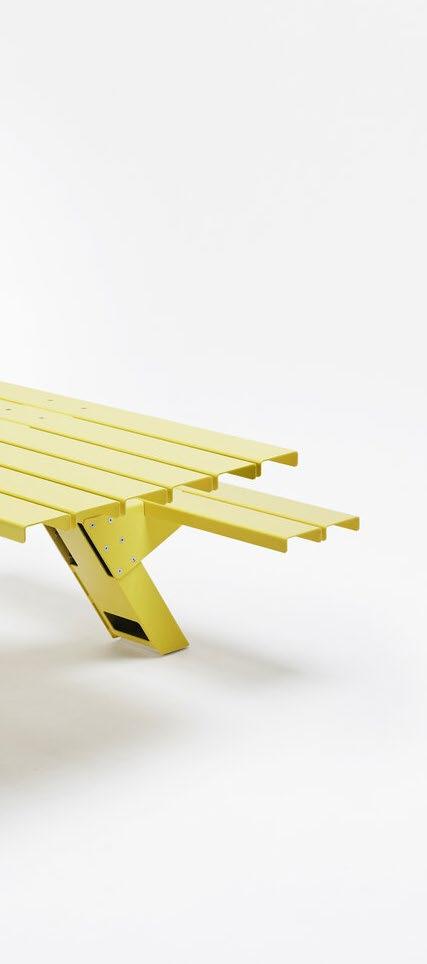
105 A Tangram Interiors Magazine
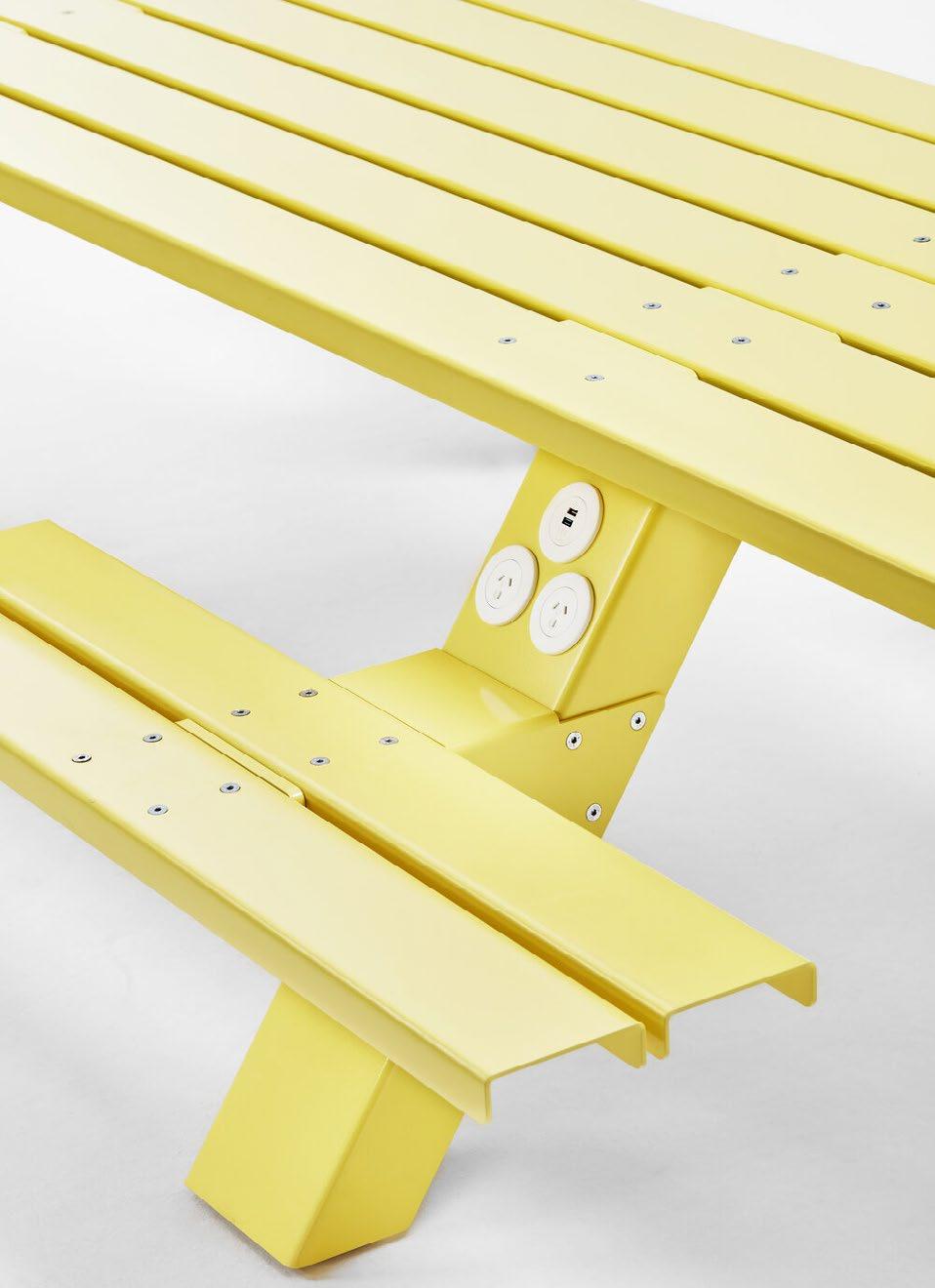
106 Puzzle: The New Office



MASS 107 A Tangram Interiors Magazine
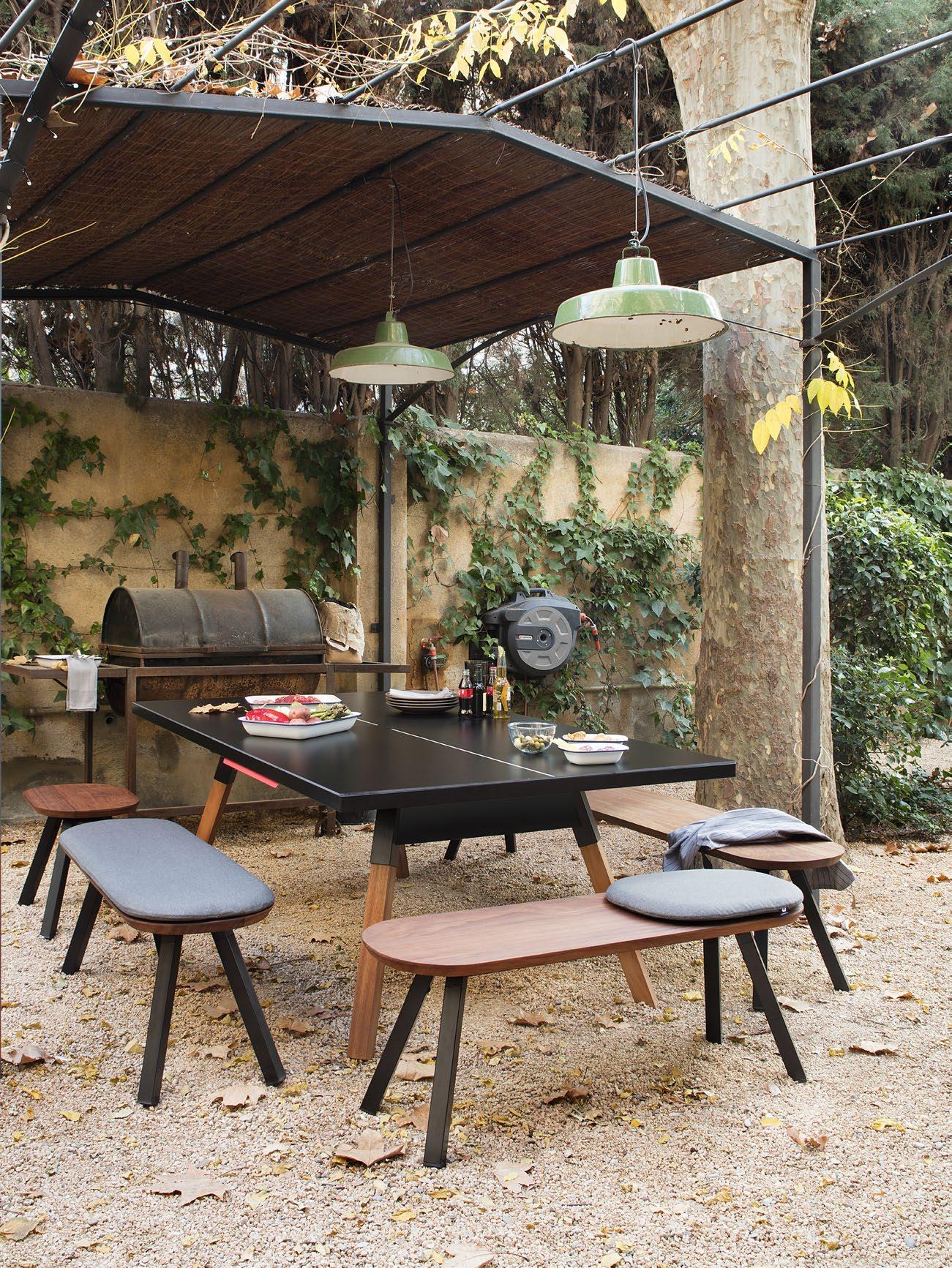
108 Puzzle: The New Office
You and Me contains all the moments you can imagine. Working meetings; Monday breakfasts as the clock runs; a family barbecue on the weekend. And it goes without saying that there’s plenty of time for many hours of playing too.


109 A Tangram Interiors Magazine



YOU AND ME 110 Puzzle: The New Office

111 A Tangram Interiors Magazine

112 Puzzle: The New Office
8 is the perfect number for playing. 10 is the round number for sitting around the most playful table. And 56 is the number of players who’ll be in action on the field. Going big. Taking it to the max. The RS MAX Dining is the dining table version of our RS MAX football table. An unforgettable, maxed-out experience.
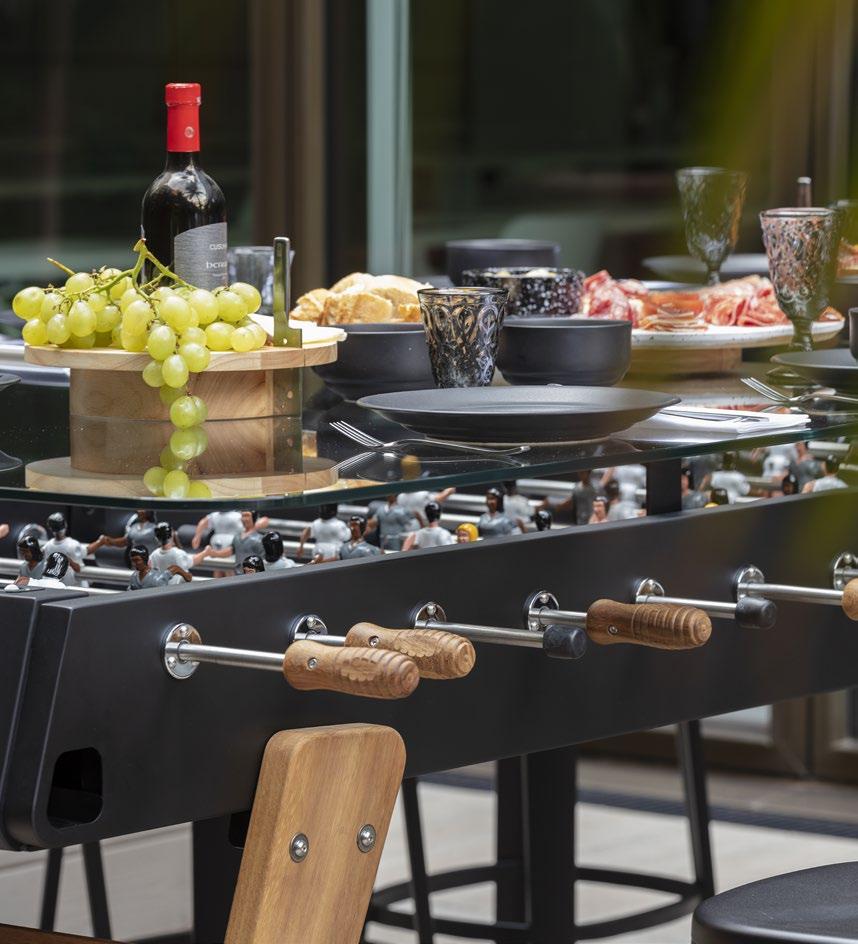
As we did first with our RS2 football table and, later on, with our RS3 Wood, we’ve also created a football-dining table version of our RS MAX. An outsized table for outsized fun. This is a table for sharing. For sharing more laughter, more goals and more excitement. For maximum fun without limits.

113 A Tangram Interiors Magazine


RS MAX DINING 114 Puzzle: The New Office

115 A Tangram Interiors Magazine

Puzzle The New Office 116
Mamagreen exemplifies a luxurious casual lifestyle, where mind and body relax. Constantly evolving collections are developed to highly exacting standards, for maximum comfort and performance.

Suitable for hospitality and residential. The cover protects again the sun and light rains. In case of heavy winds or storms and snow, remove shade & cushions to avoid damage. Available in a wide range of colors. Optional floor mounting for public areas.
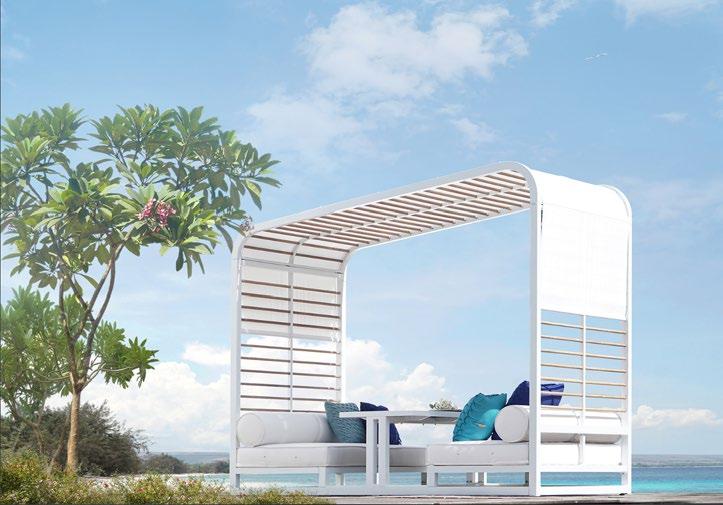

117 A Tangram Interiors Magazine

118 Puzzle: The New Office
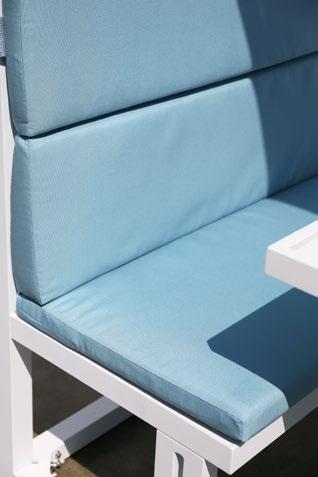



119 A Tangram Interiors Magazine
Sombrero Lounge

120 Puzzle: The New Office
Solar is a disruptive swivel table concept designed by Marc Krusin, that leads to new ways of working and collaborating for both Indoor and Outdoor stages.
Solar is made up of a table with an integrated seat, which rotates according to the user’s needs, guaranteeing collaboration but also privacy. The structure is made of steel for both versions. In the Indoor version, the table is available in an oak or compact finish. It also includes a small hook, located under the dash so that the user can keep their belongings close anytime.
A new concept of versatile table, ideal for offices, educational environments such as schools or universities, restaurants and coworking spaces, and for outdoor use.

121 A Tangram Interiors Magazine
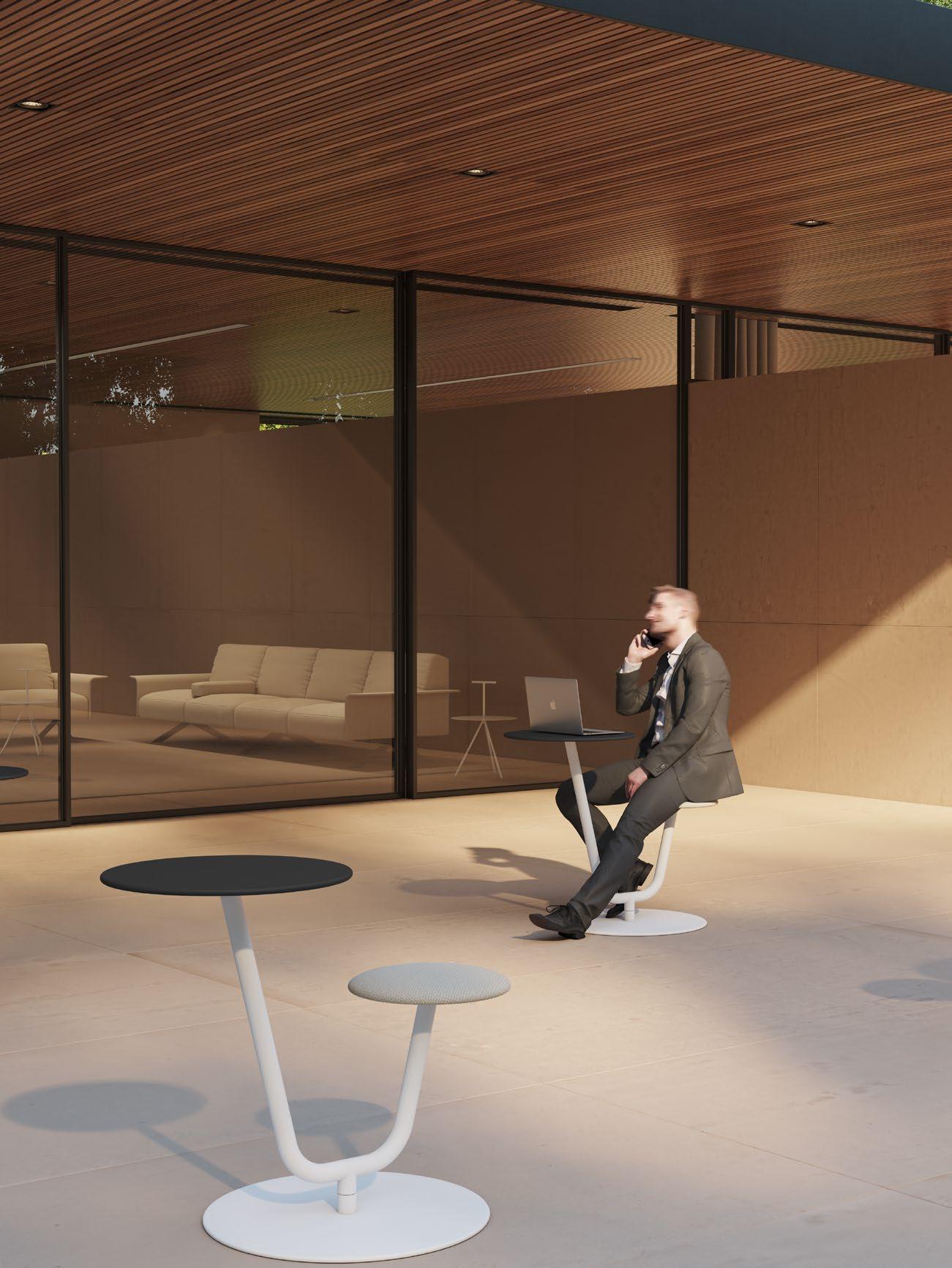
122 Puzzle: The New Office



SOLAR 123 A Tangram Interiors Magazine
TECHNOLOGY

124 Puzzle: The New Office
Technology
Better eye contact. The ability to move around. More natural conversations. Great hybrid collaboration experiences need to be designed for equity, engagement and ease. Ease is especially important: if the spaces and technology are hard to use, people will not take advantage of the resources available to them. People on both sides of the camera need to be able to see and hear one another and contribute to content. Whether you’re joining in-person or remote, you should be on a level playing field.
Better technology can motivate people to return to the office more often, including better computers, video conferencing tools, interactive collaboration displays and a reservation system.
 Ember Office, Westlake Village, CA
Ember Office, Westlake Village, CA
125 A Tangram Interiors Magazine


126 Puzzle: The New Office
Healthcare, hospitality, and corporate real estate are plagued by distracting noise pollution, resulting in billions of dollars lost annually.
Biophilic soundscapes are a verified alternative to traditional sound masking. They reduce disruptive noise, improve speech privacy, and have even outperformed traditional masking sounds in terms of speech masking.

Biophilic soundscapes are a scientifically verified alternative to traditional sound masking. In 2011 a comparison of five
masking conditions, which included filtered pink noise, showed that the sound of natural spring water was the optimal speech masker based on both task performance and user preference.
Further benefits include health & wellbeing, employee loyalty, speech privacy, flexible design and portfolio optimization.
Key features include zonal, user-controllable, sensor-driven, personalized, algorithmic and circadian.

127 A Tangram Interiors Magazine

128 Puzzle: The New Office
Easily transform your office into a hybrid workplace with meeting room booking software that empowers your team.



From desks to meeting rooms and so much more, inspace’s software takes the guesswork out of hybrid setup, streamlining the employee experience and enhancing productivity. By providing data-driven insights, inspace equips leaders with the tools to optimize space utilization and create a seamless, loved work experience for all.

129 A Tangram Interiors Magazine
Neat designs simple and elegant pioneering video devices for Zoom and Microsoft Teams, helping to make your meeting experiences the best they can be by ensuring you and your colleagues always look, sound, and feel great.



Neat turns meetings into cinematic productions that encourage freedom of movement and organic conversation.
This more human digital experience positively impacts people’s well-being, motivation, and productivity.
130 Puzzle: The New Office

131 A Tangram Interiors Magazine
Puzzle: The New Office Tangram Interiors


































































 Dan Bigman is Editor and Chief Content Officer of Chief Executive Group, publishers of Chief Executive, Corporate Board Member, ChiefExecutive.net, Boardmember.com, StrategicCHRO, StrategicCFO360 and StrategicCIO360. Previously he was Managing Editor at Forbes and the founding business editor of NYTimes.com.
Dan Bigman is Editor and Chief Content Officer of Chief Executive Group, publishers of Chief Executive, Corporate Board Member, ChiefExecutive.net, Boardmember.com, StrategicCHRO, StrategicCFO360 and StrategicCIO360. Previously he was Managing Editor at Forbes and the founding business editor of NYTimes.com.




























 Christian Grosen, Chief Design Officer, Vitra
Christian Grosen, Chief Design Officer, Vitra





















































































































 Ember Office, Westlake Village, CA
Ember Office, Westlake Village, CA












